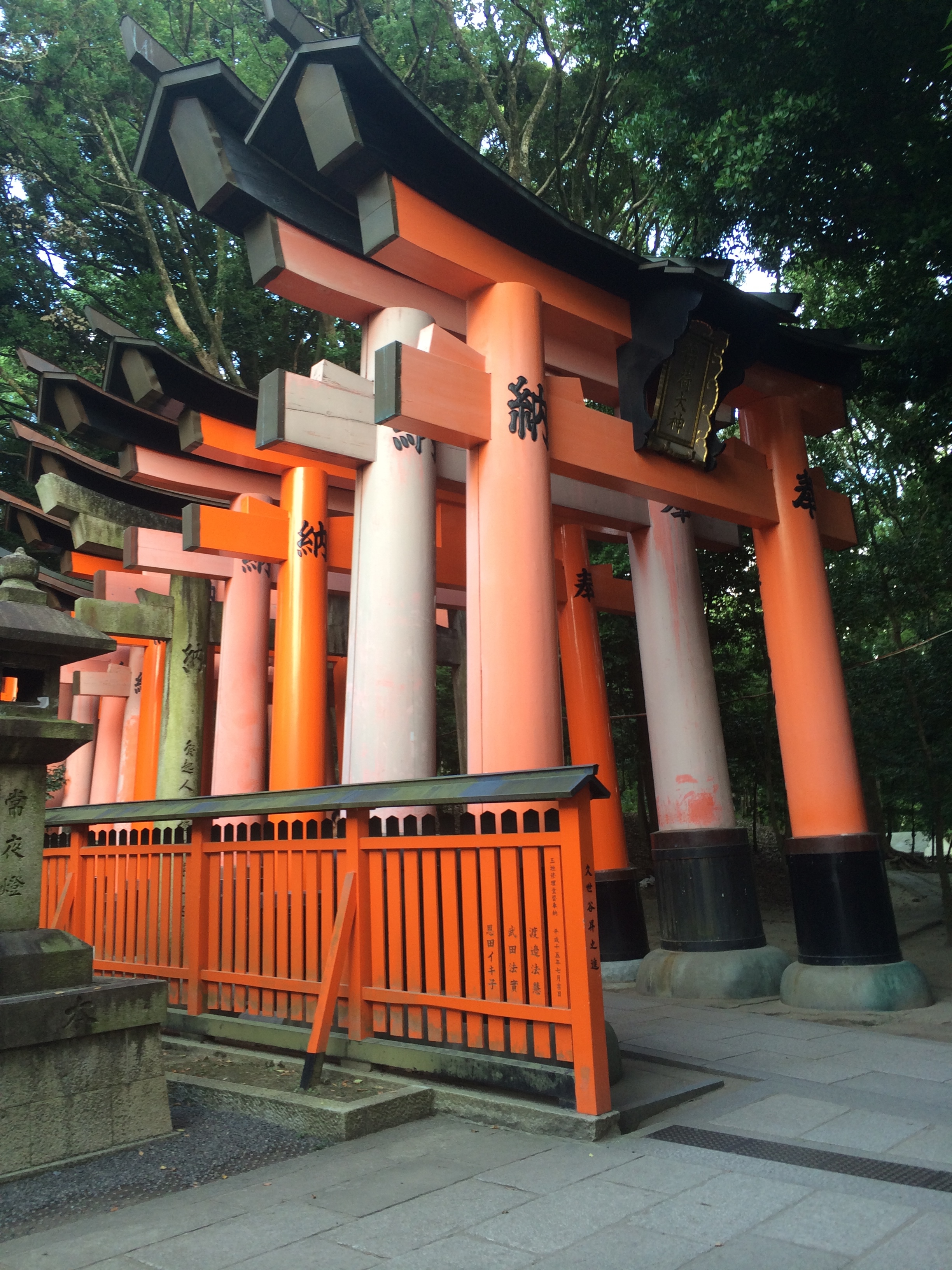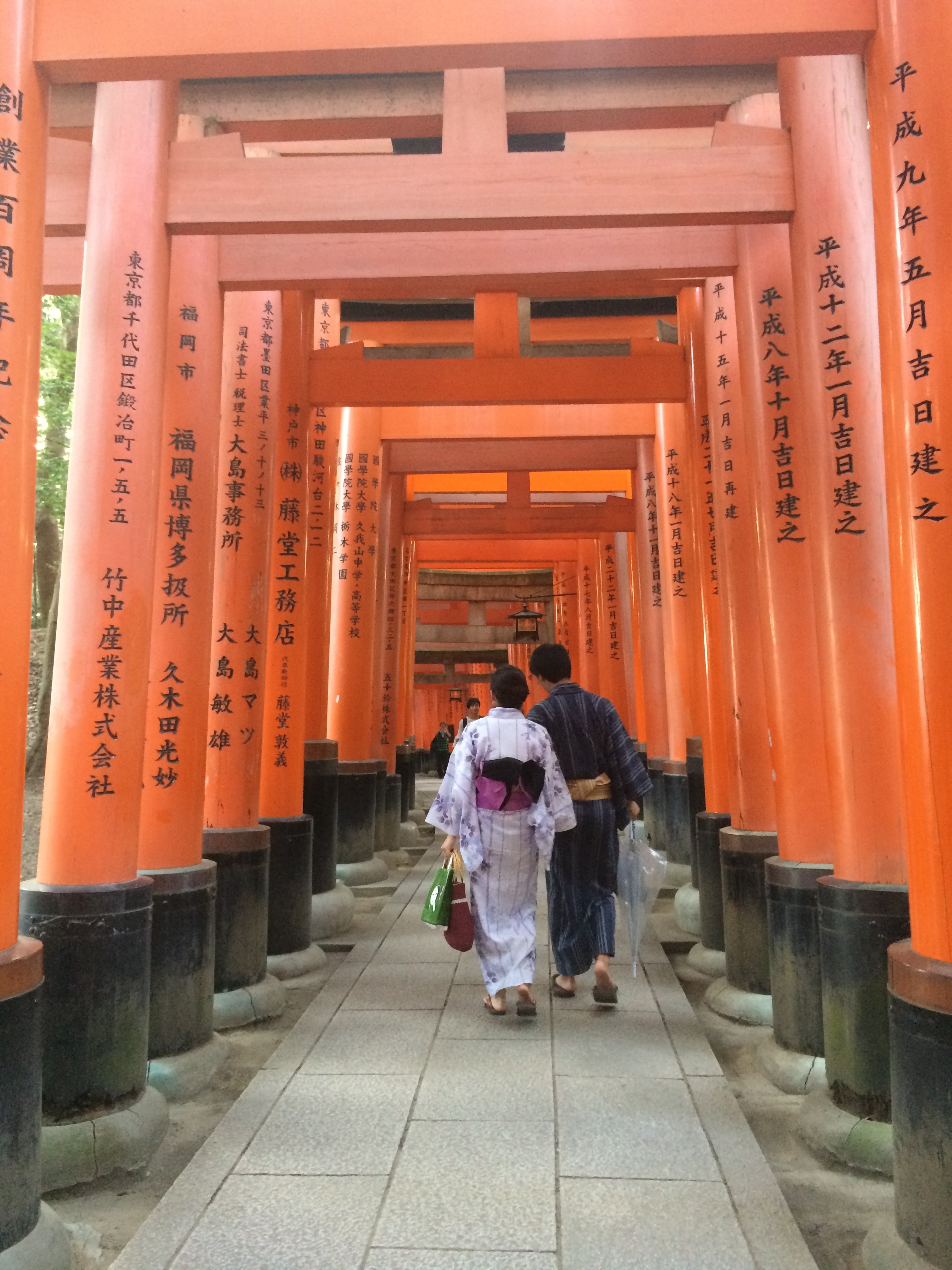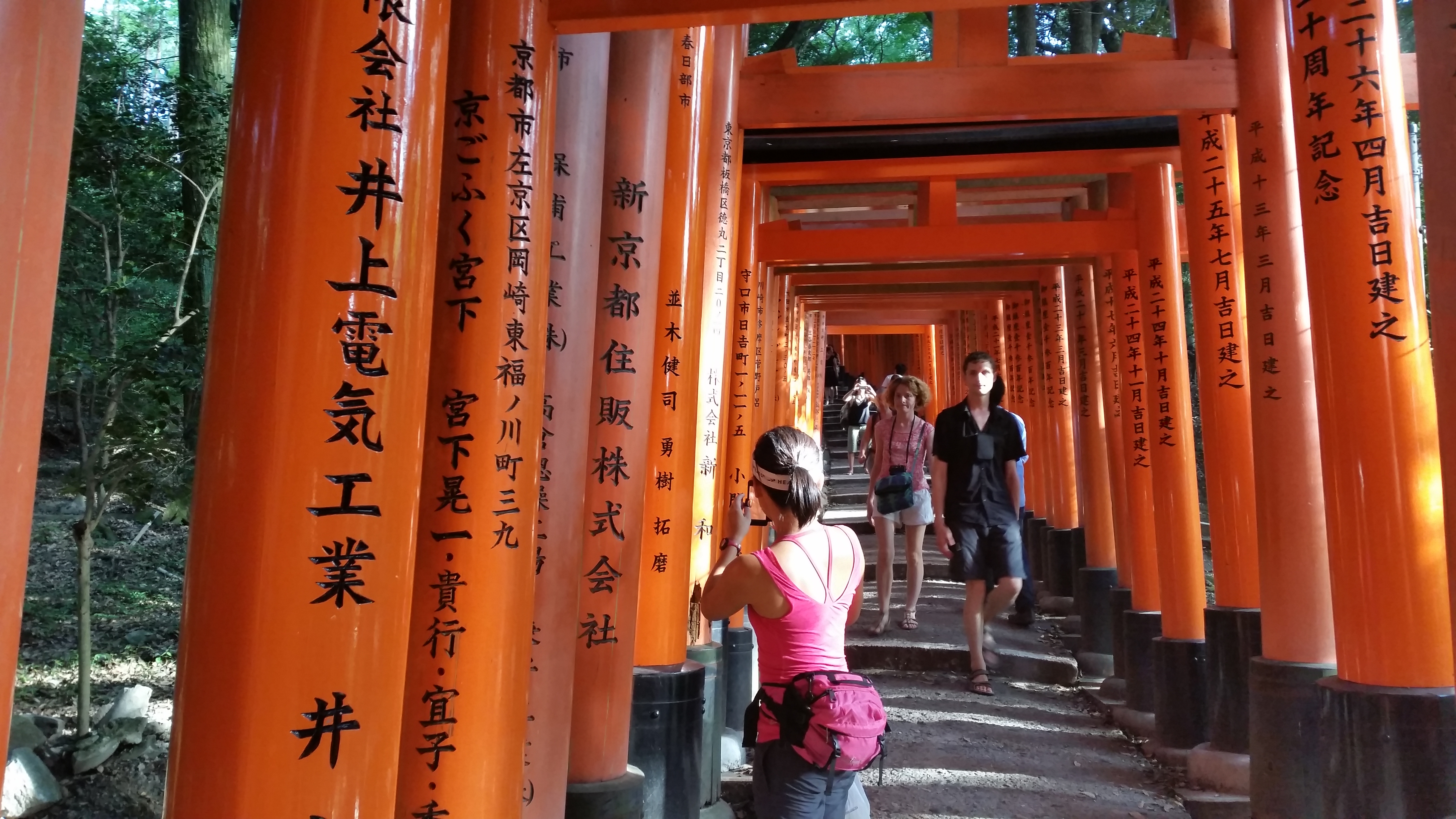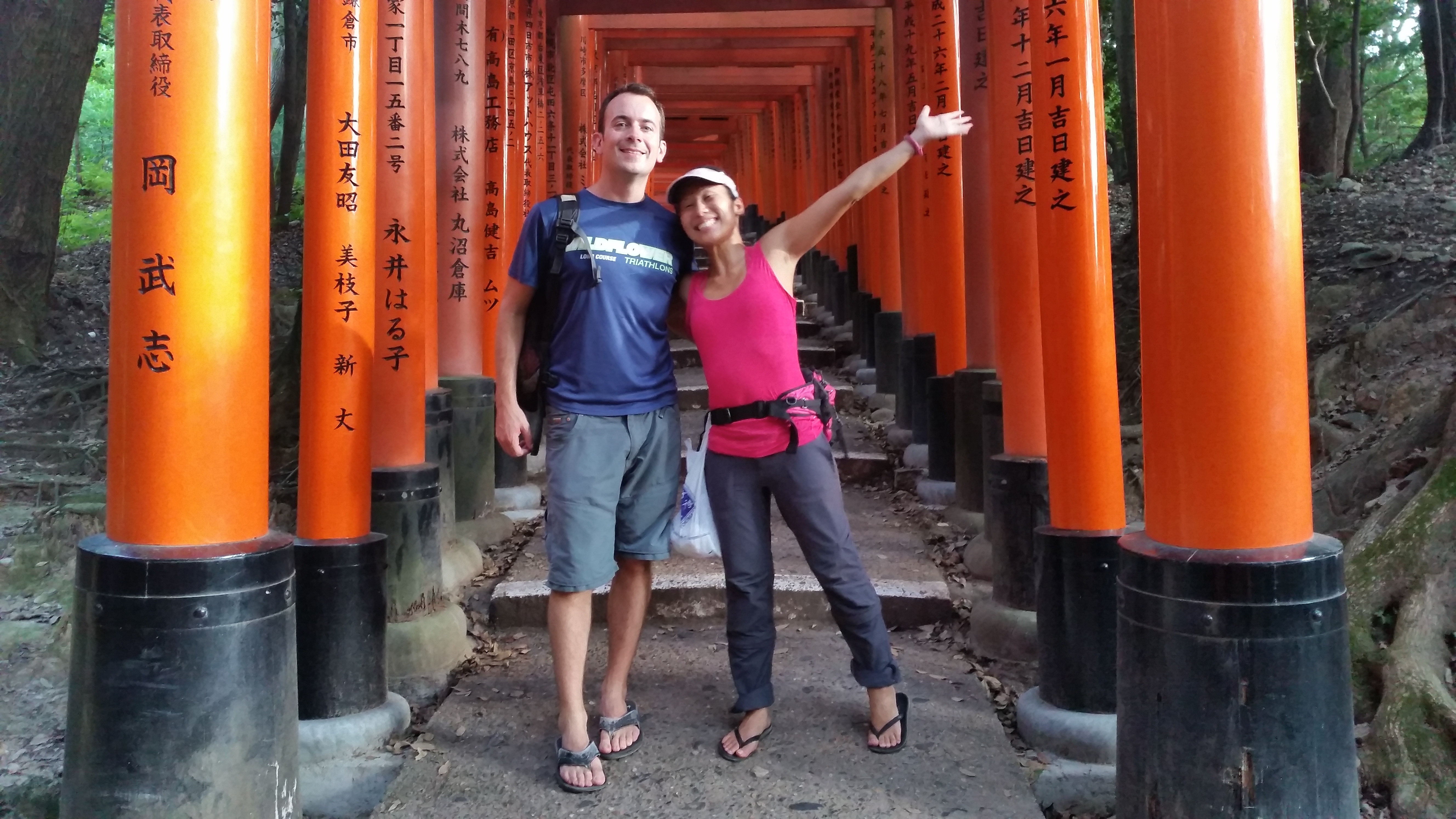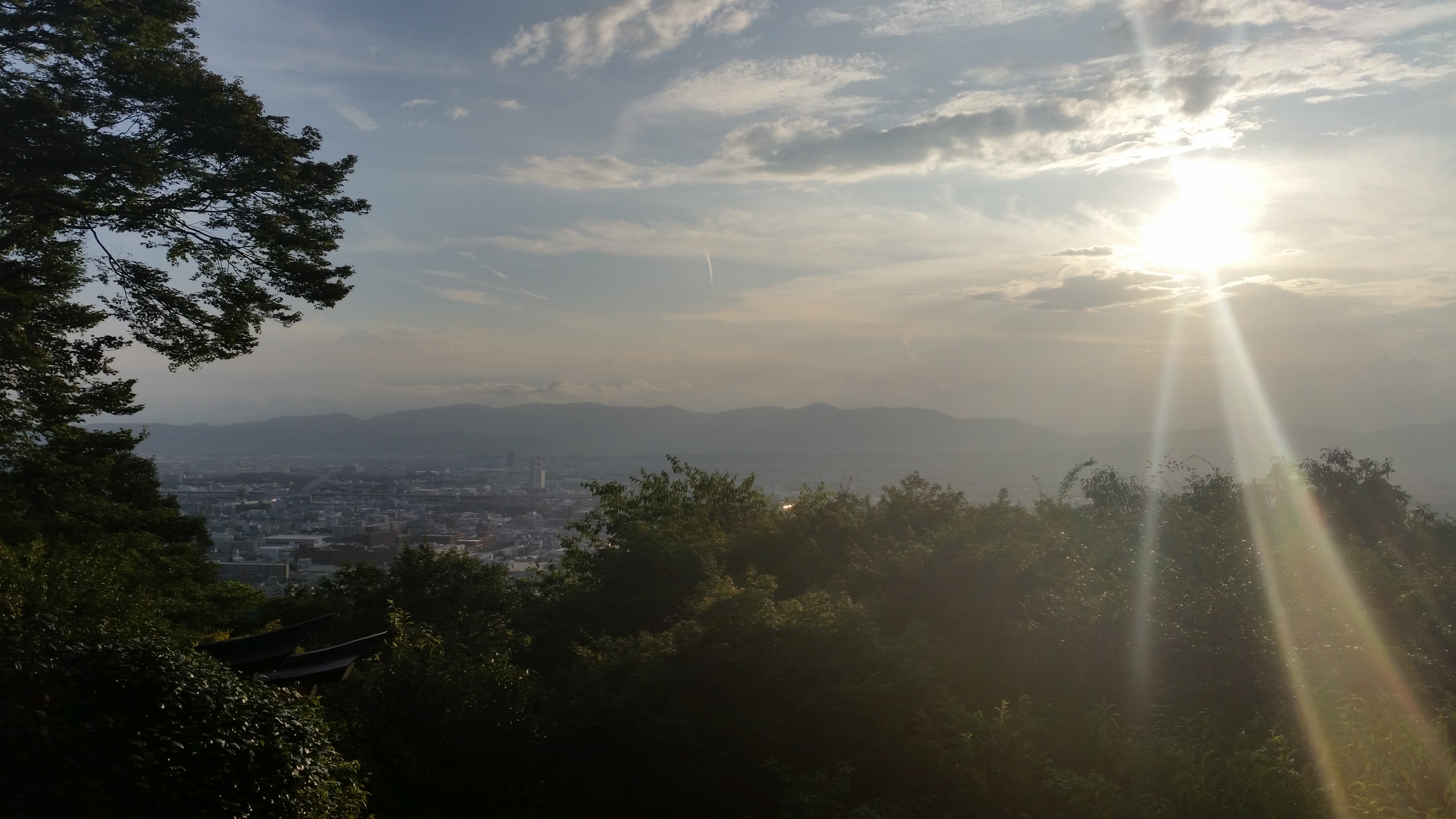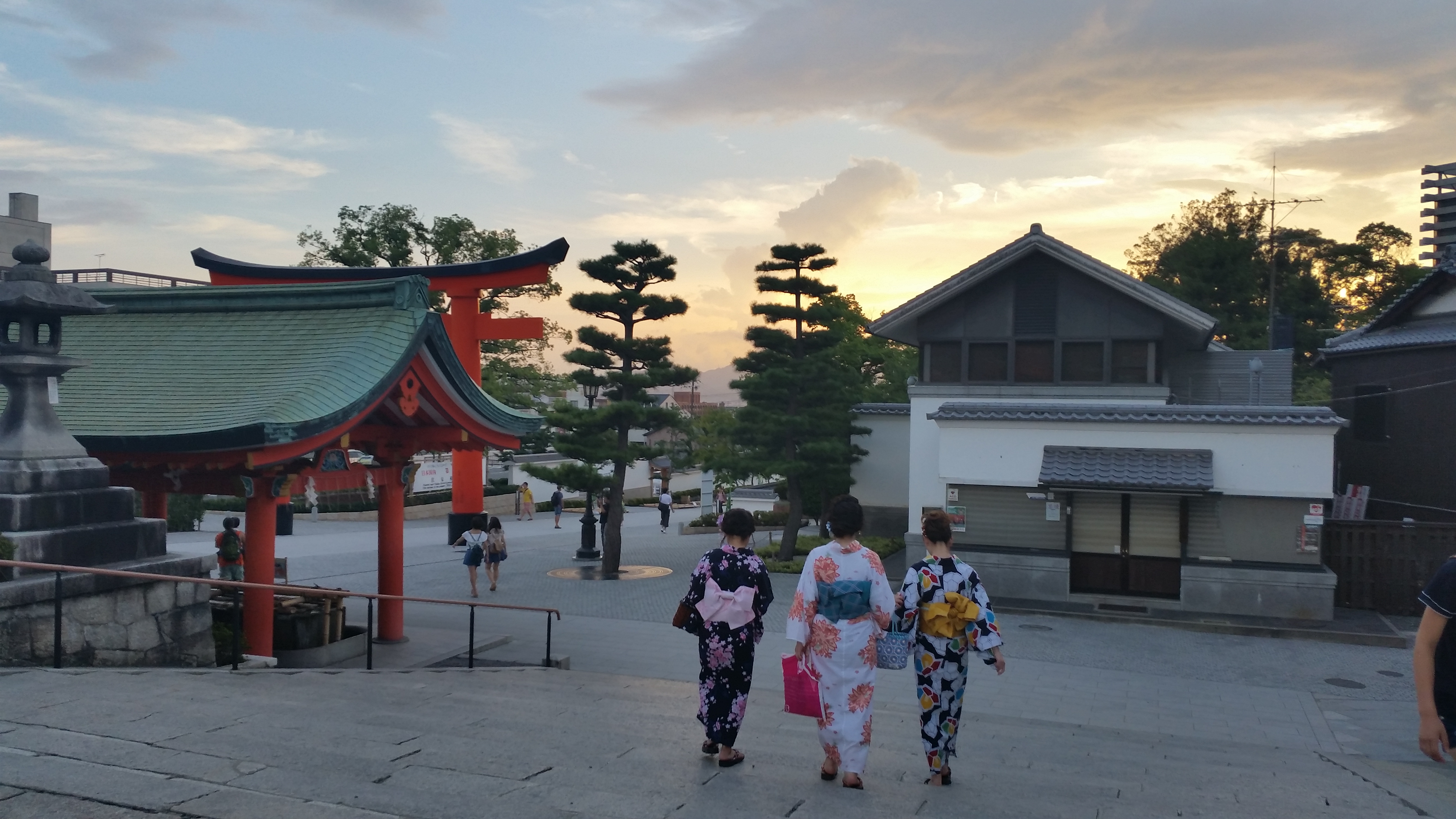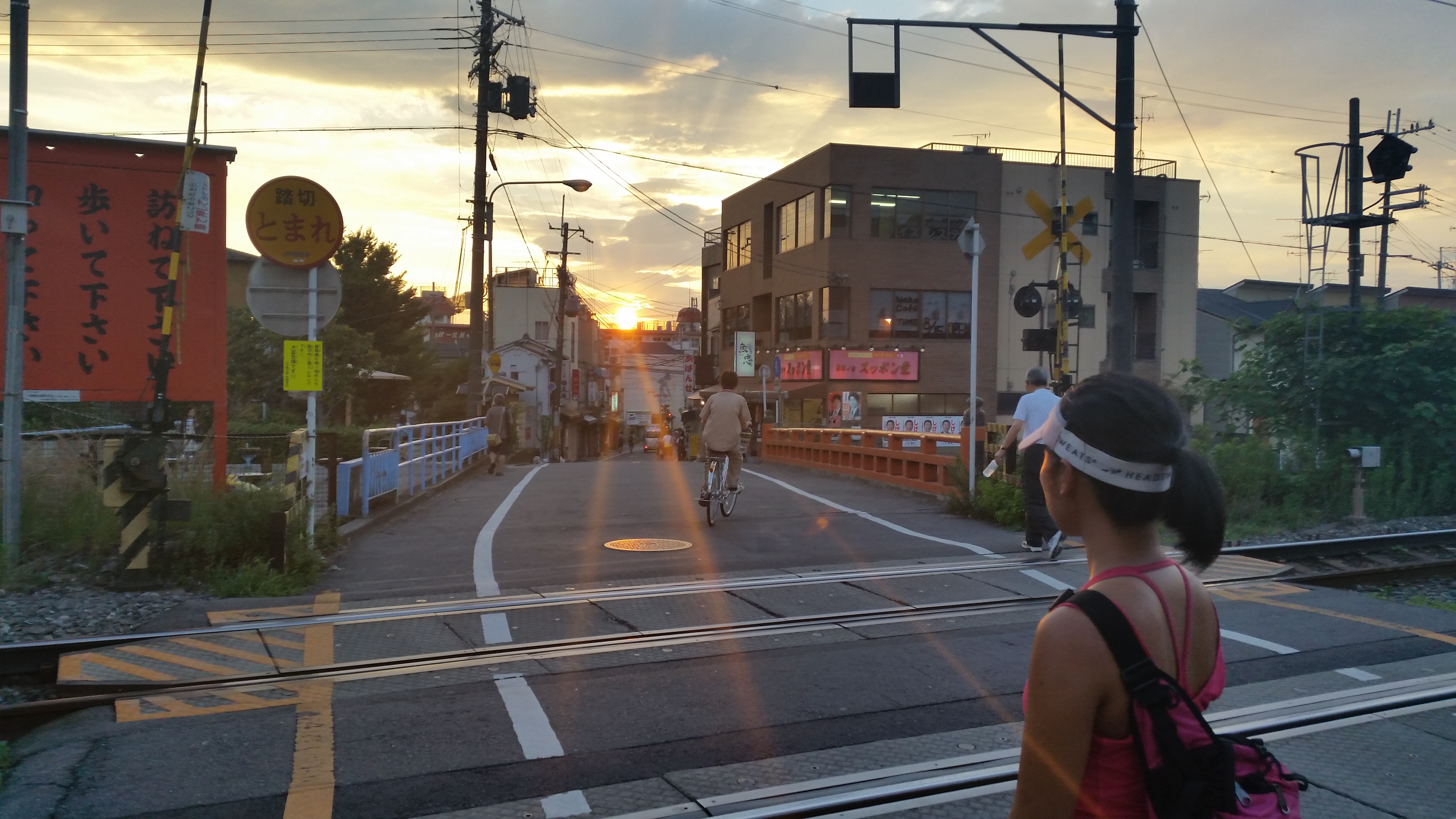From 794 to 1868, the historical and cultural city of Kyoto was the capital of Japan and residence of the Emperor. Throughout this millennium an innumerous amount of palaces, castles, shrines, and temples were built for emperors, monks, shoguns, and continue to stand strong as a result of the bombing restriction the U.S. had on Kyoto during WWII. As this city is also considered the birthplace of the geisha, a number of cultural geisha performances continue to exist today for locals and tourists, albeit highly expensive and exclusive. Presently, Kyoto is Japan’s seventh largest city with a population of ~1.5 million and is equipped with a state-of-the-art central train station, plenty of high-end shopping, and luxurious department stores. However, the true gem of this cultural capital lies beyond the modern bustling city, and once the traditional structures and gardens are discovered, one can easily embrace the beauty of Japan’s culture.
Large and spread out, Kyoto is composed of a number of districts that each hold a famous attraction and often a World Heritage Site. Although unpleasantly crowded, the high seasons of spring and fall are the most popular times to visit for tourists and locals as the trees are either filled with infamous cherry blossoms or tinted with dramatic crimson leaves. Nowhere else in Japan are there slews of women who proudly stroll through the streets in their colorful summer kimono, giving photographers ample opportunity for a picturesque souvenir photo of Japan. I enjoyed seeing cliques of kimono-clad women in the subways.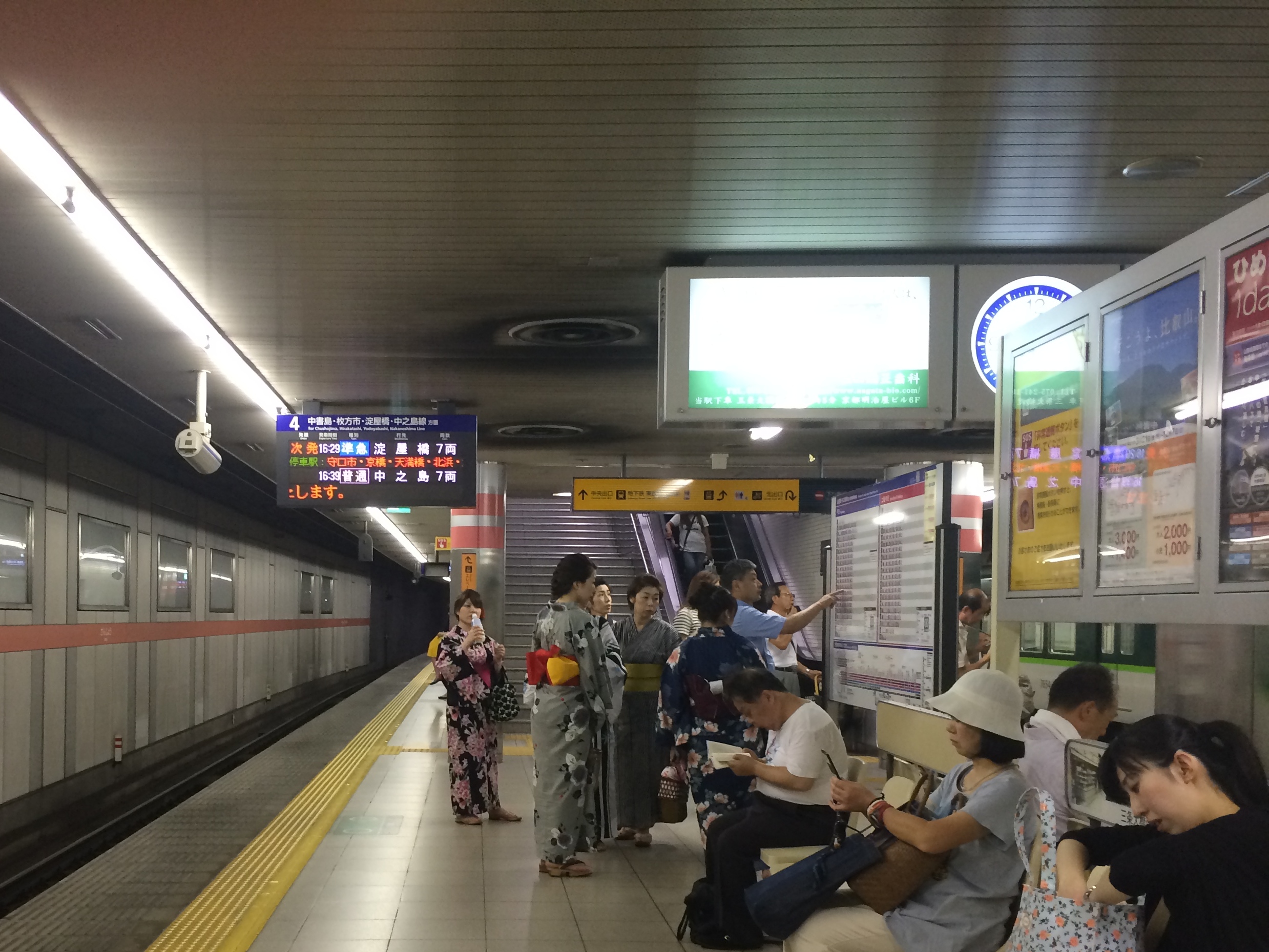
If one wanted to discover Kyoto at a leisurely pace, I think four or five days would suffice to gain enough appreciation for its hidden treasures. Our packed schedule only spared us two days, which was barely enough to get a glimpse of Kyoto. Sightseeing in Kyoto is definitely expensive; in addition to admission fees (¥300 up to ¥1000) for almost every attraction, subway fares of a couple bucks add up, not to mention bus rides (¥500 for a daily pass). If there is one thing we Chris splurged on, it was the hotel room. So far in Japan we had stayed in bare tatami rooms, and one night in bunk beds in Miyajima. Before that, we were crammed in a closet-sized room in Hong Kong for a week. And even before that, we were in Myanmar guesthouses, which were all poor attempts at making the Westerner feel comfortable. Budget hotels in Southeast Asia are also filled with a variety of discomforts at the sacrifice of cost. For the first time in over four months, we had a “normal” hotel room with English-speaking staff, impeccable service, and spotless, functioning amenities. I’ve sampled a bunch of desserts all over this journey, and sadly enough, my favorite dessert ended up being the surprisingly flavor-explosive chocolate cake and cheesecake from 7-11. Since we pampered ourselves with the hotel, we spoiled ourselves further with this cake plate and red wine from 7-11.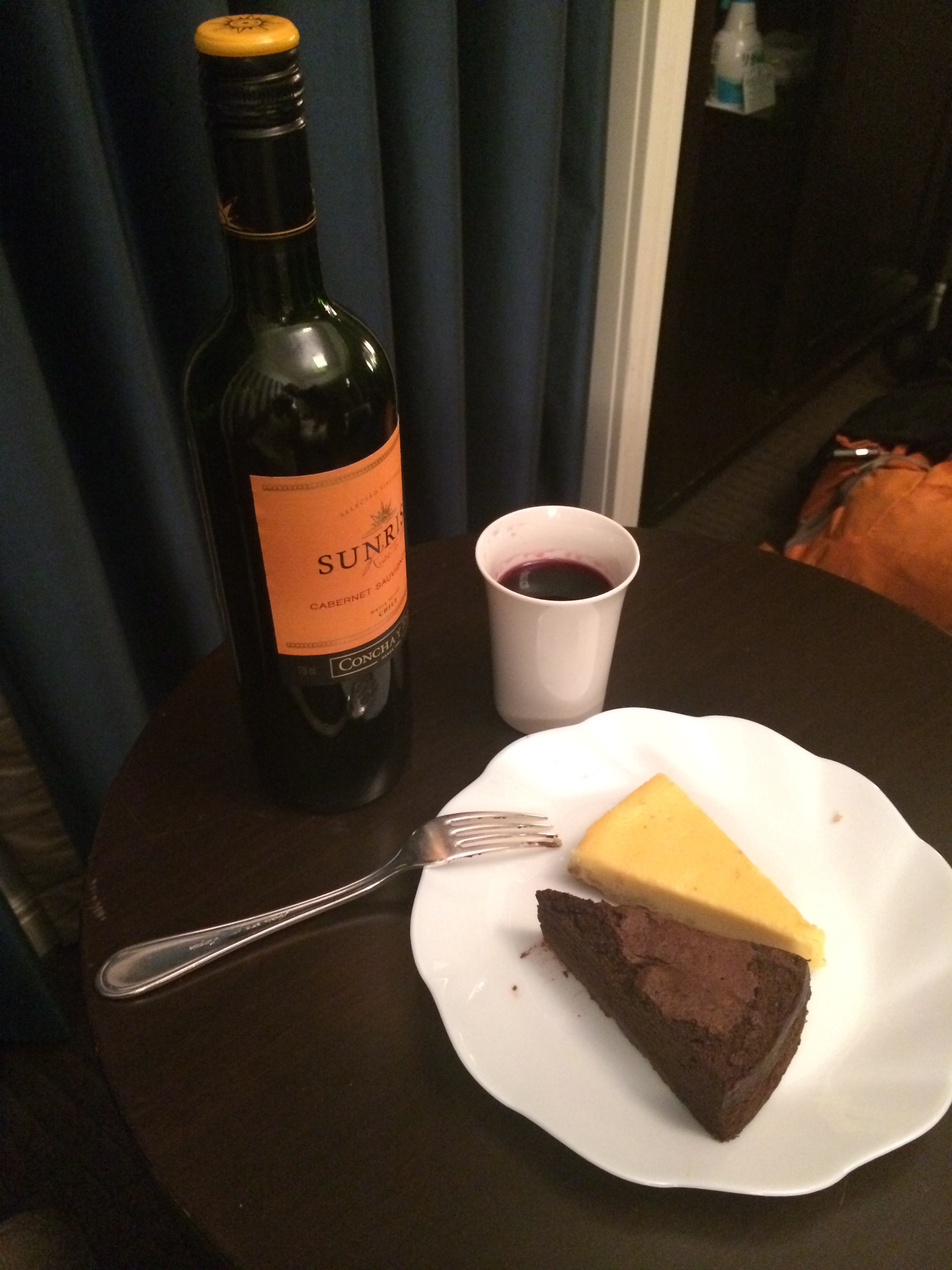
Both mornings began early. Because I didn’t want to waste time eating breakfast at a restaurant, I filled our fridge with food instead. We were able to enjoy breakfast in our own room thanks to the fridge, a luxury we rarely had in Southeast Asia.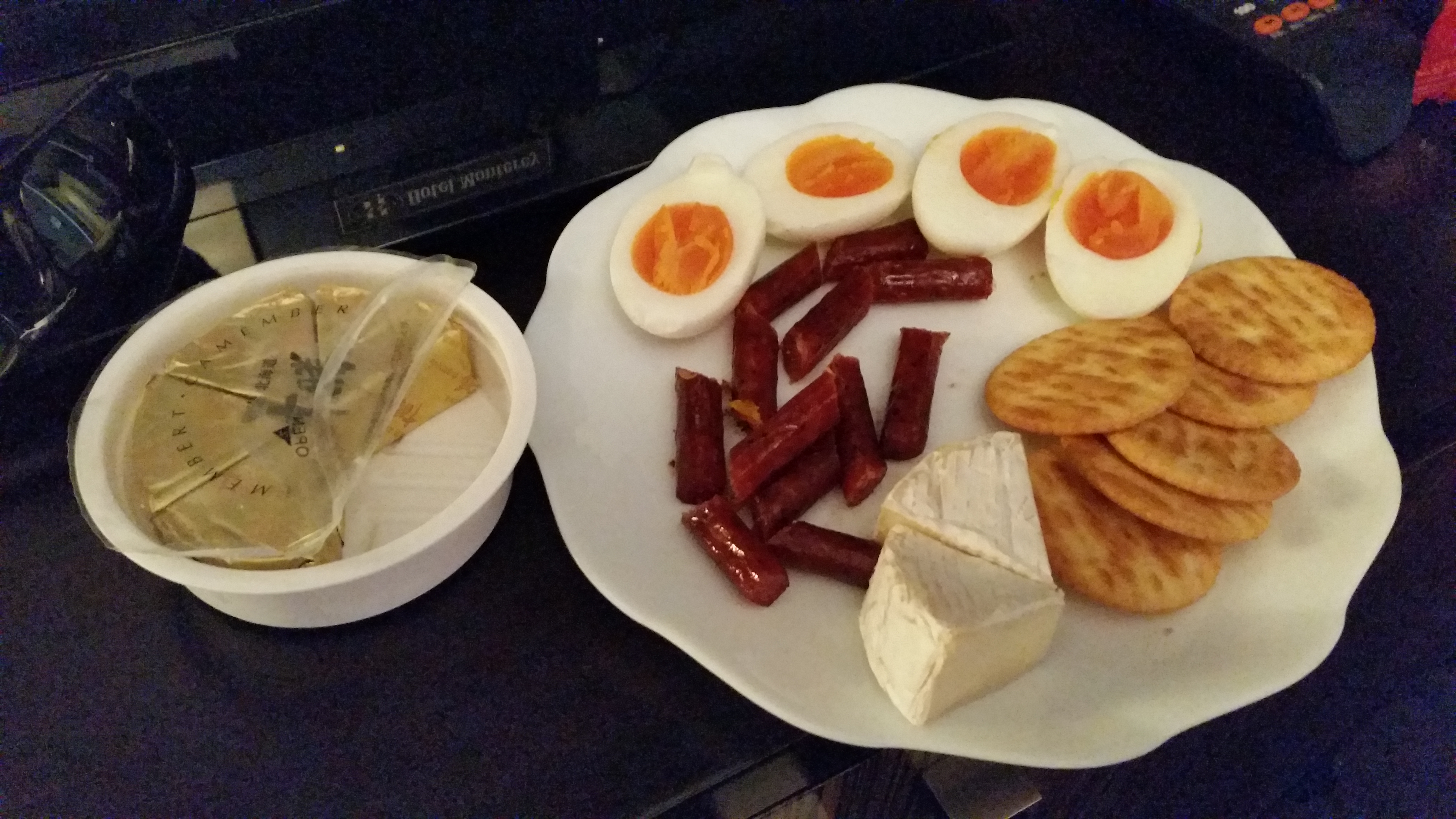
I never mentioned how insanely expensive fruit is in Japan. Peaches are easily sold in department stores for ¥500-¥1000, and grapes were anywhere from ¥2000-¥3000. We happened to walk by a fruit vendor in the subway who sold fruit for significantly cheaper, so we splurged on the most expensive grapes we’ve ever eaten. I wanted to eat grapes in Japan before I left! Here you go, a bunch of grapes for ¥1100 (about $11 USD).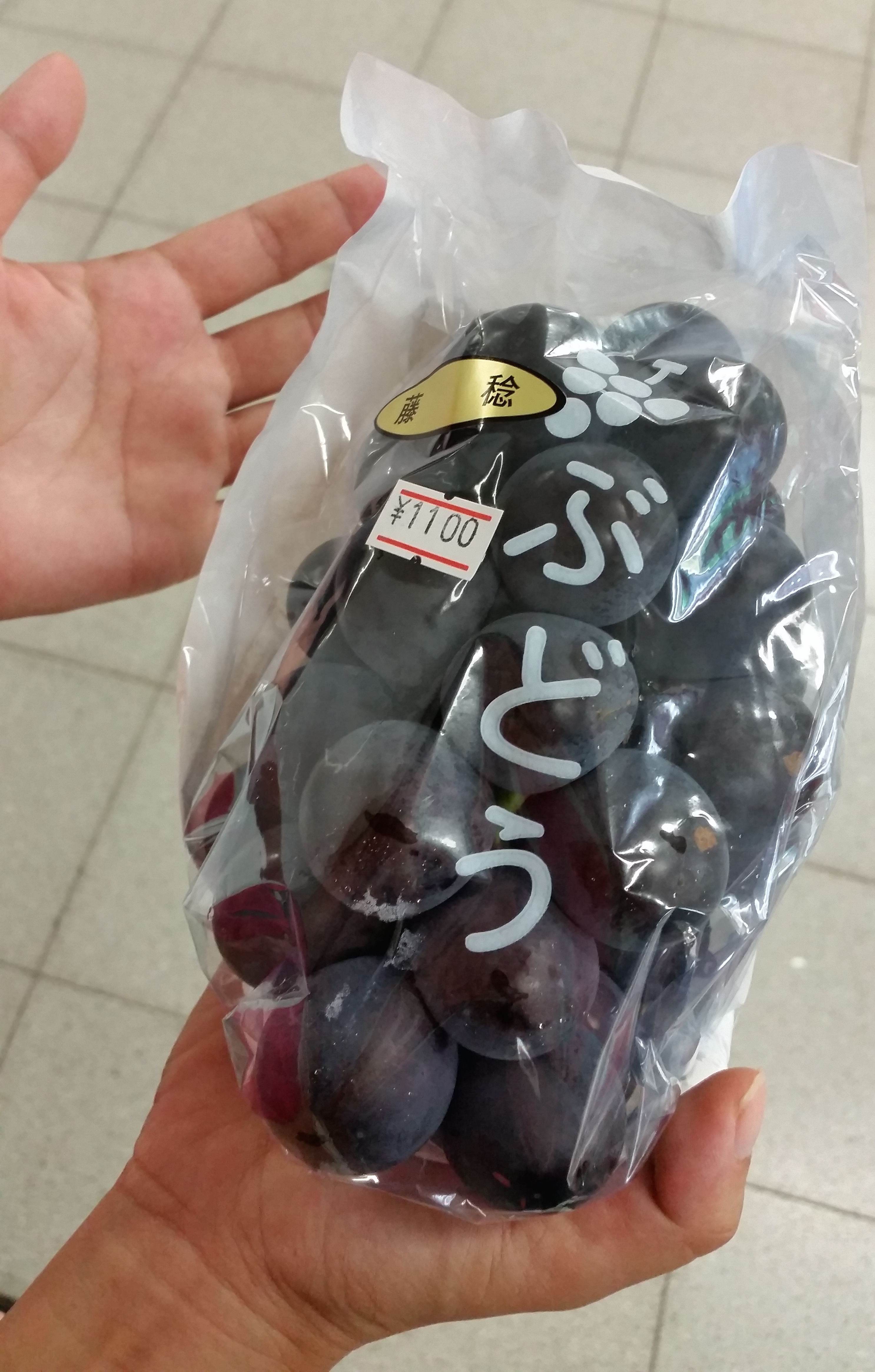
Now on to the temples! I will list them in the exact order of our visit.
Day 1
Overlooking the city and nestled in the eastern hills stands Kiyomizu-Dera, one of the most touristy temples typically packed with tour buses and tour groups with flag-waving leaders. The large, red gate at the entrance is perhaps one of the most-photographed gates in Kyoto.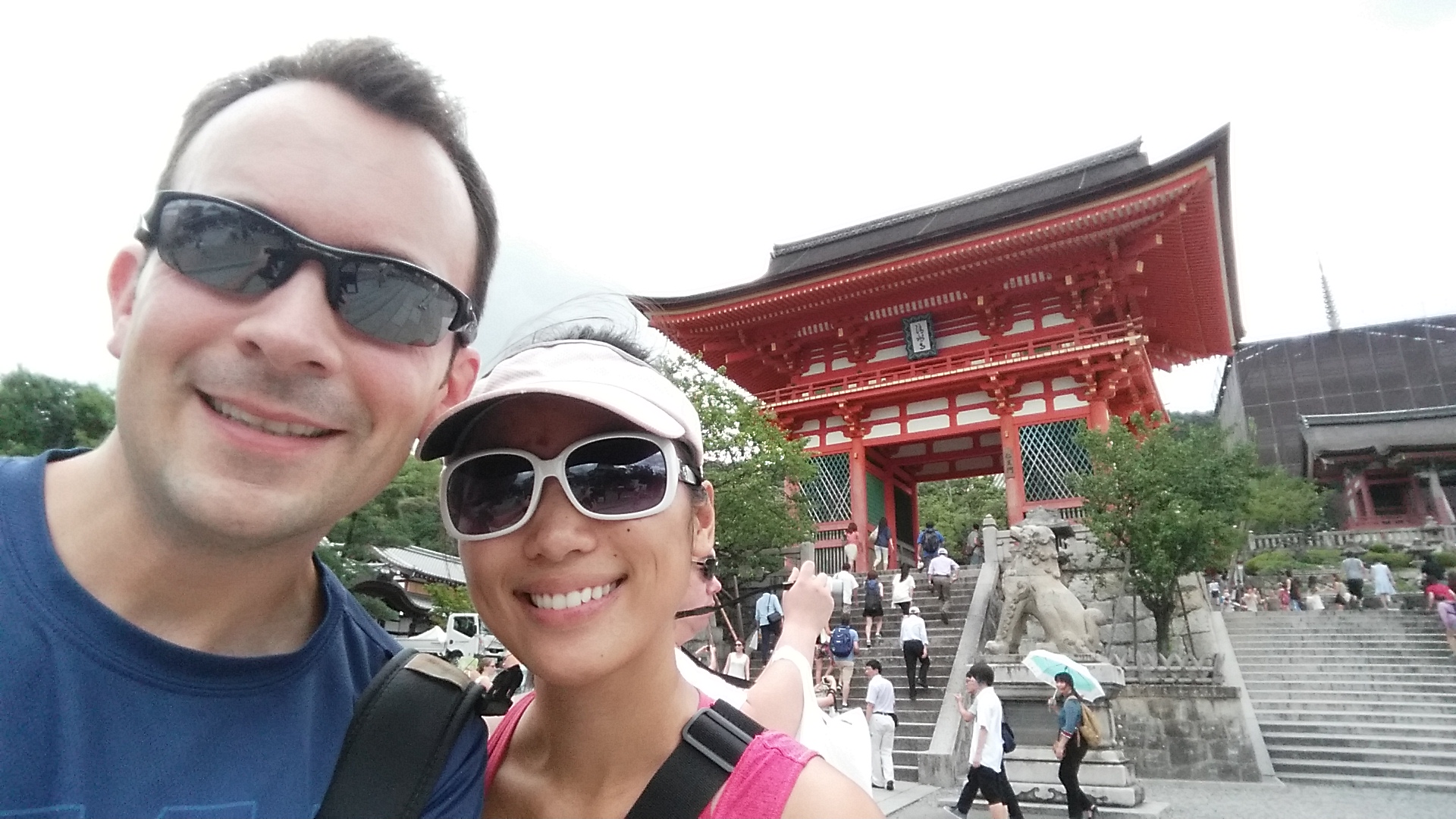
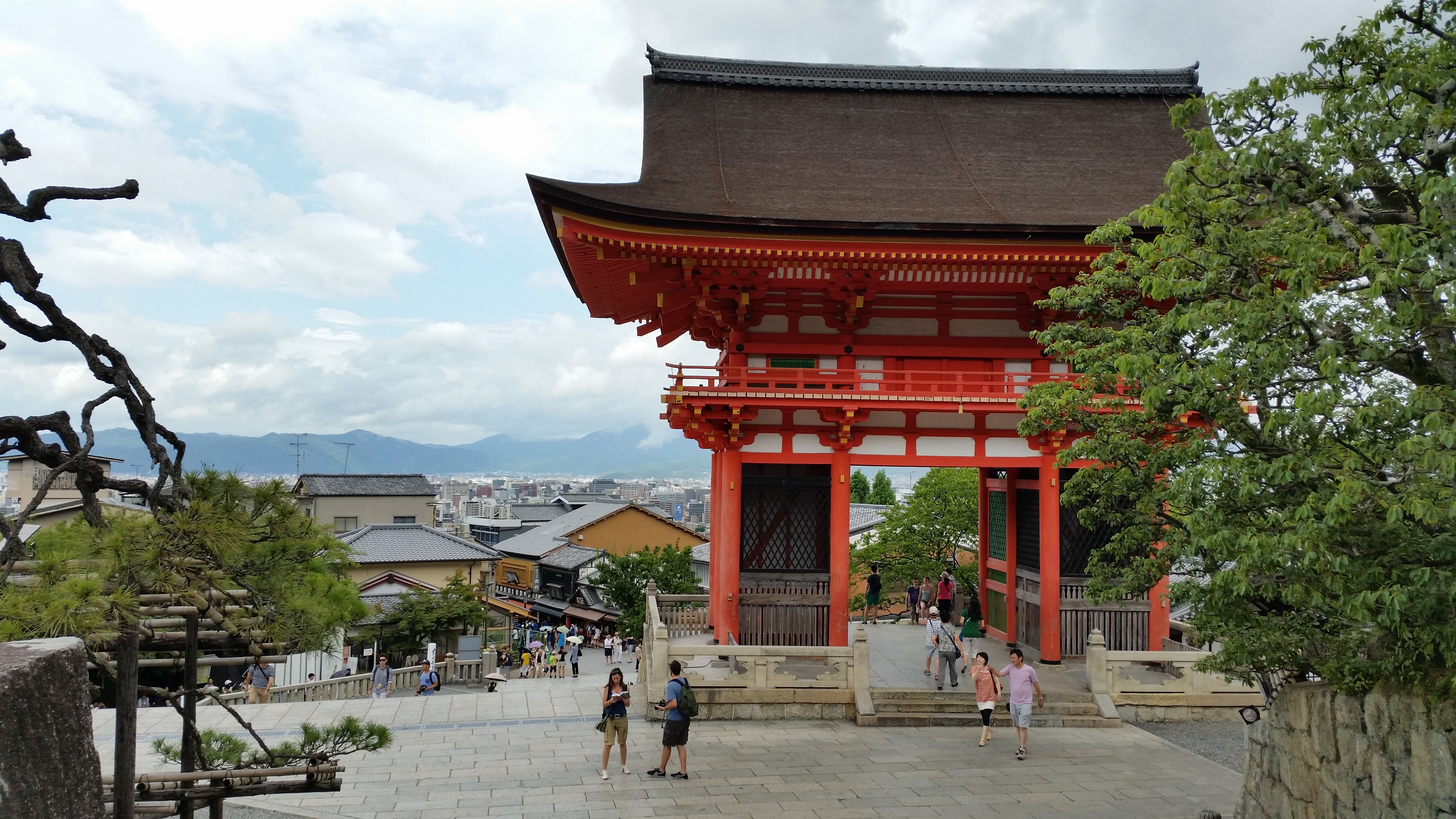
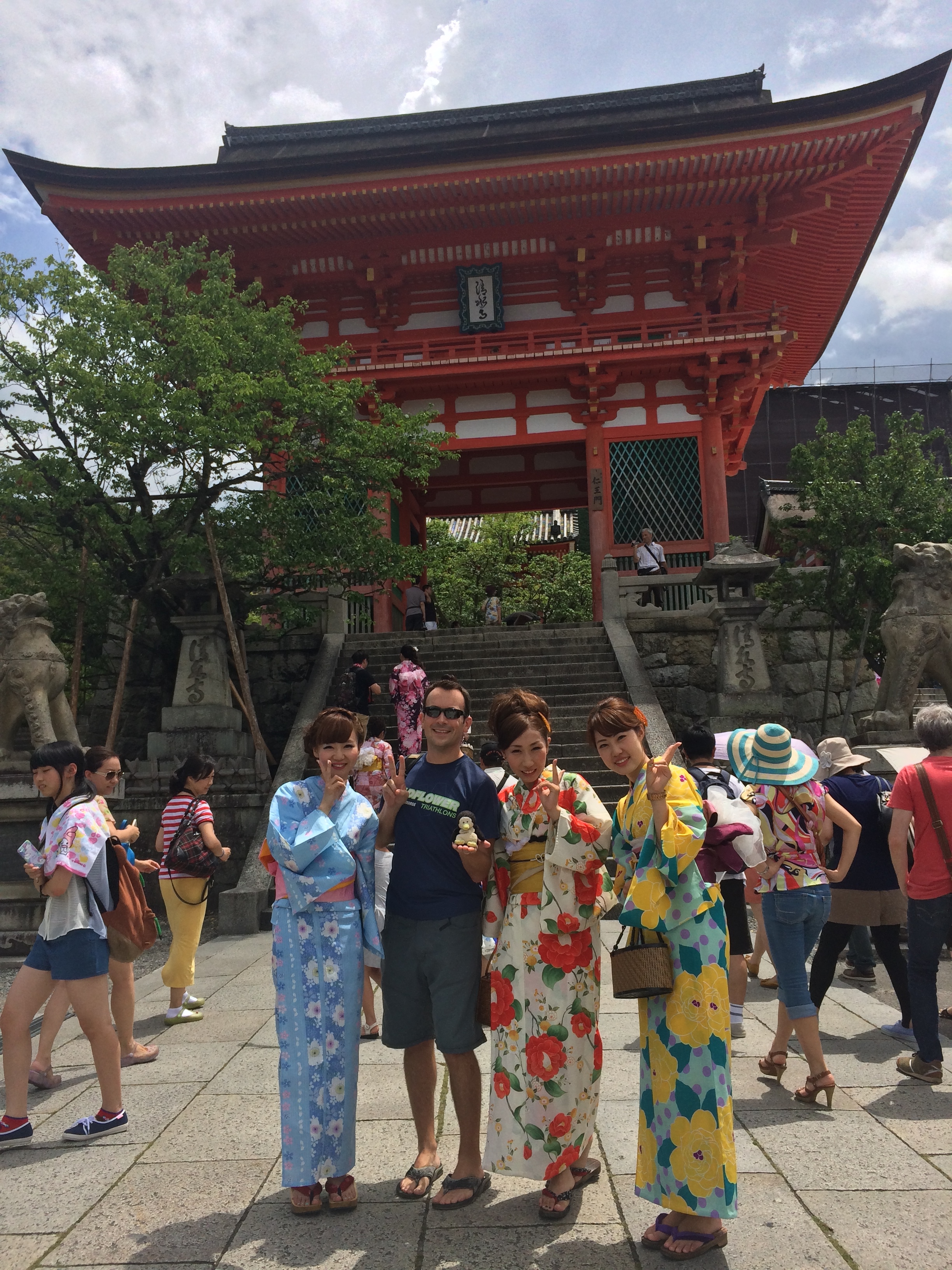
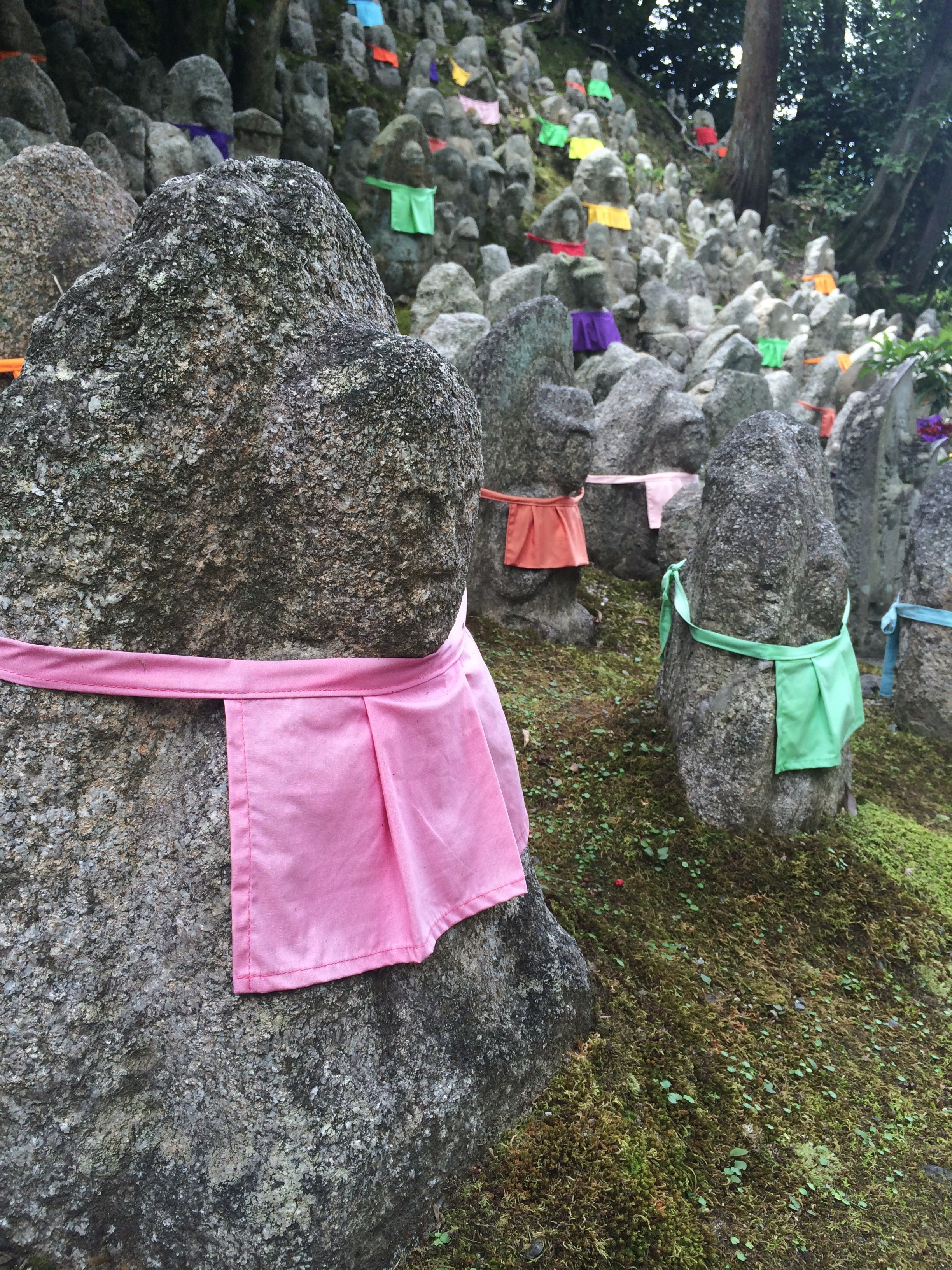
The mercantile streets leading up to Kiyomizu-dera are two preserved streets, showcasing a bit of what the old Kyoto had once looked long ago.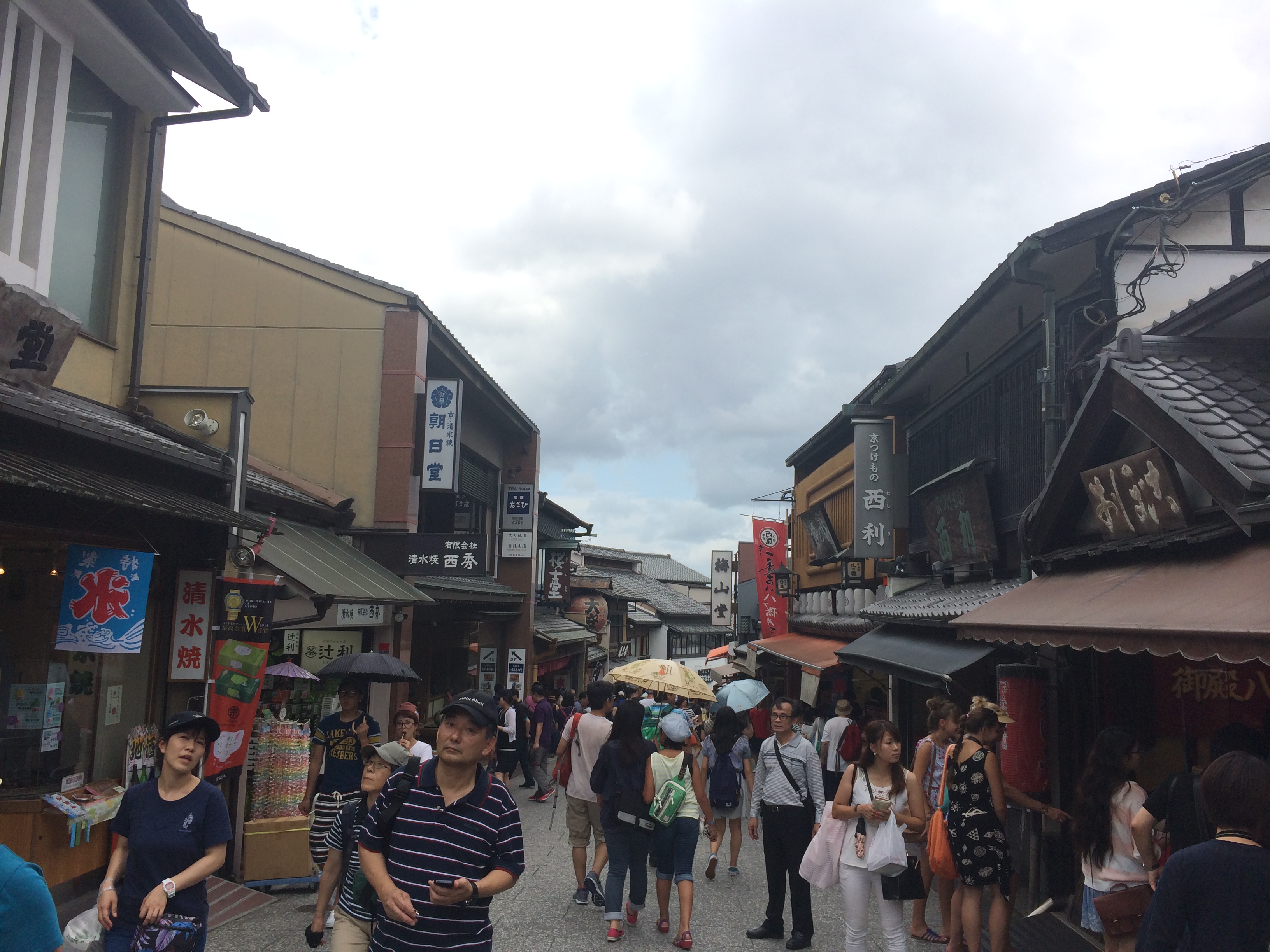
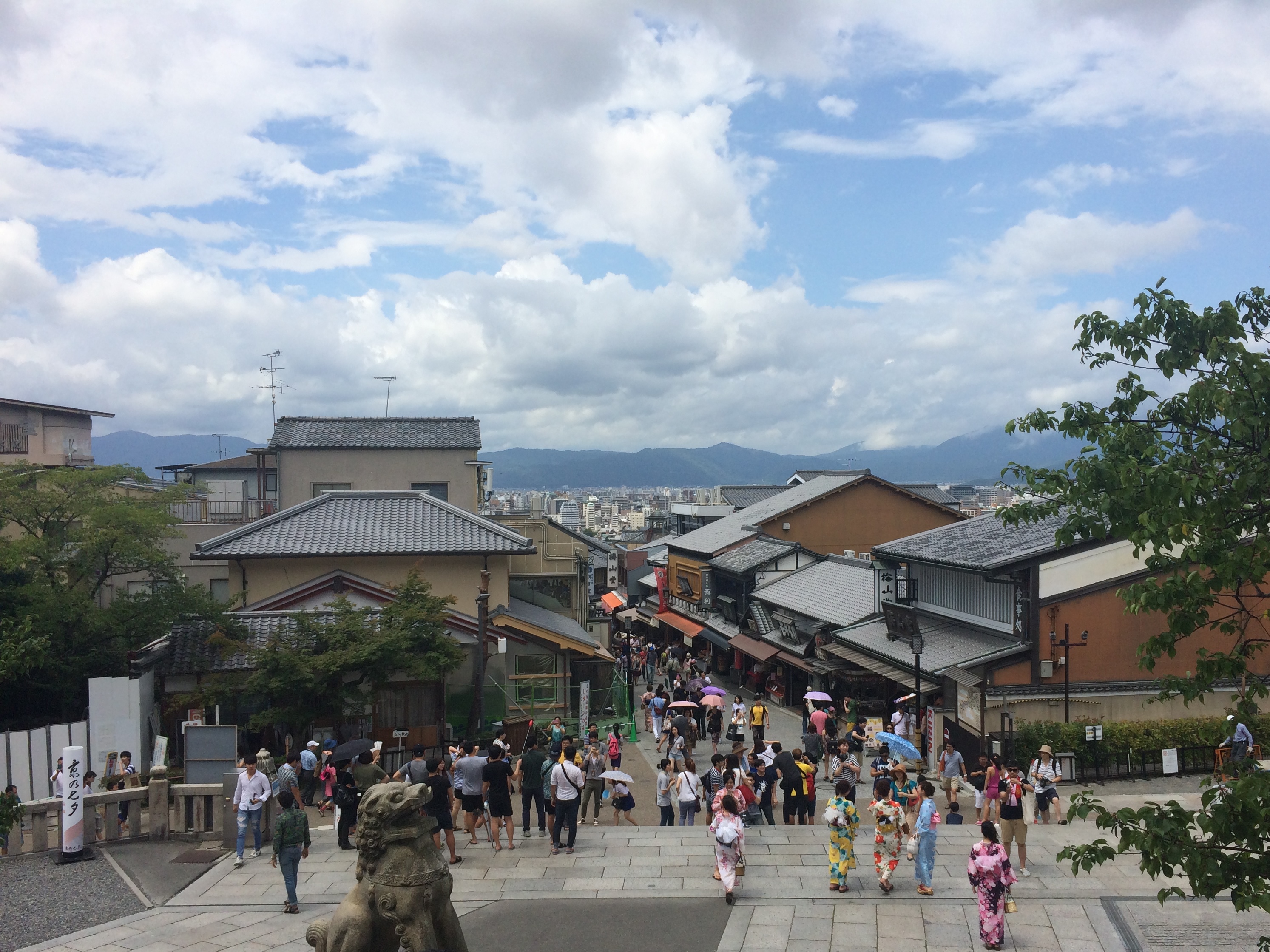
After Kiyomizu-dera we walked over to Chion-in, where everything is massive in scale. Unfortunately the main hall is under construction until 2019.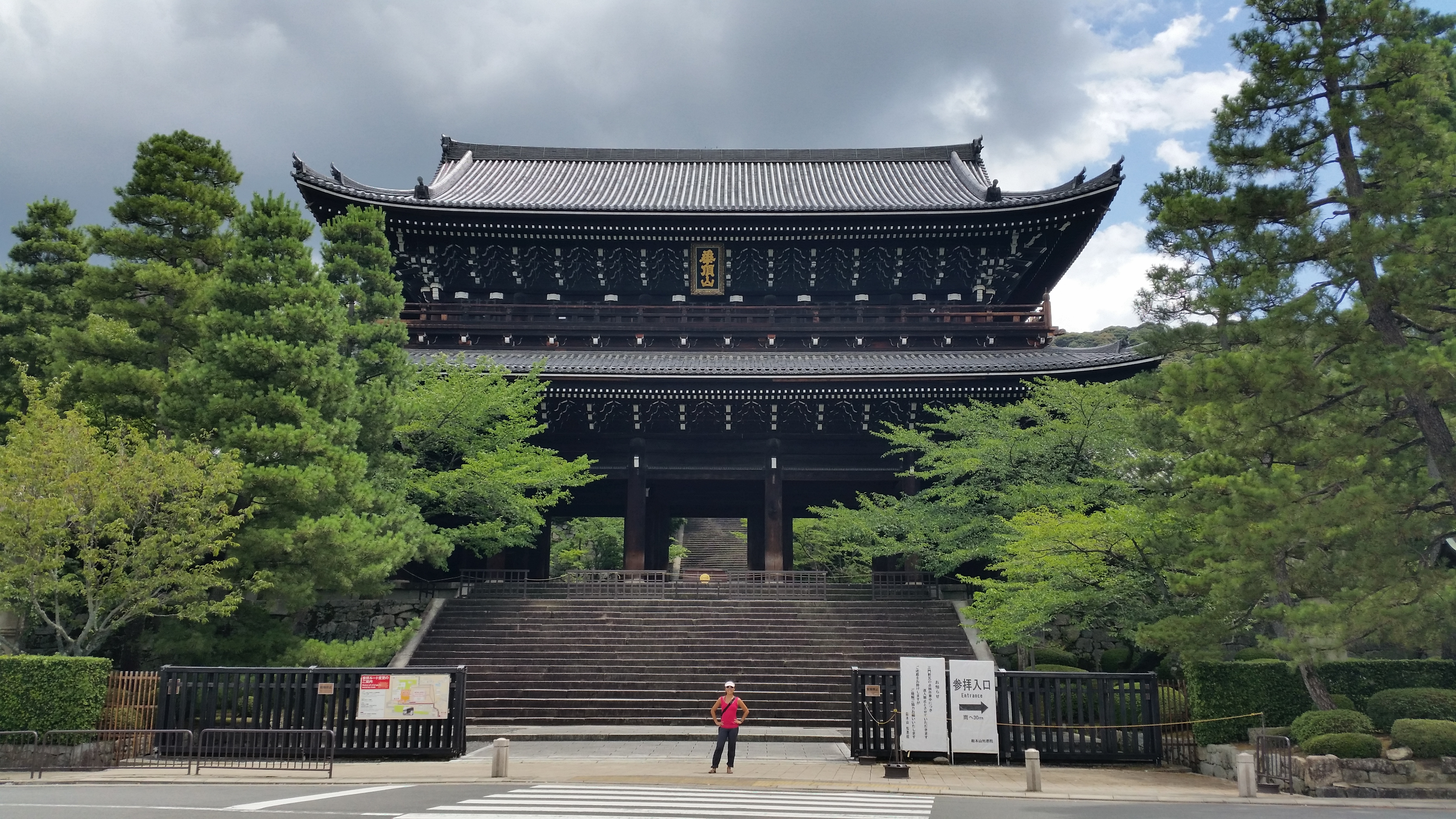
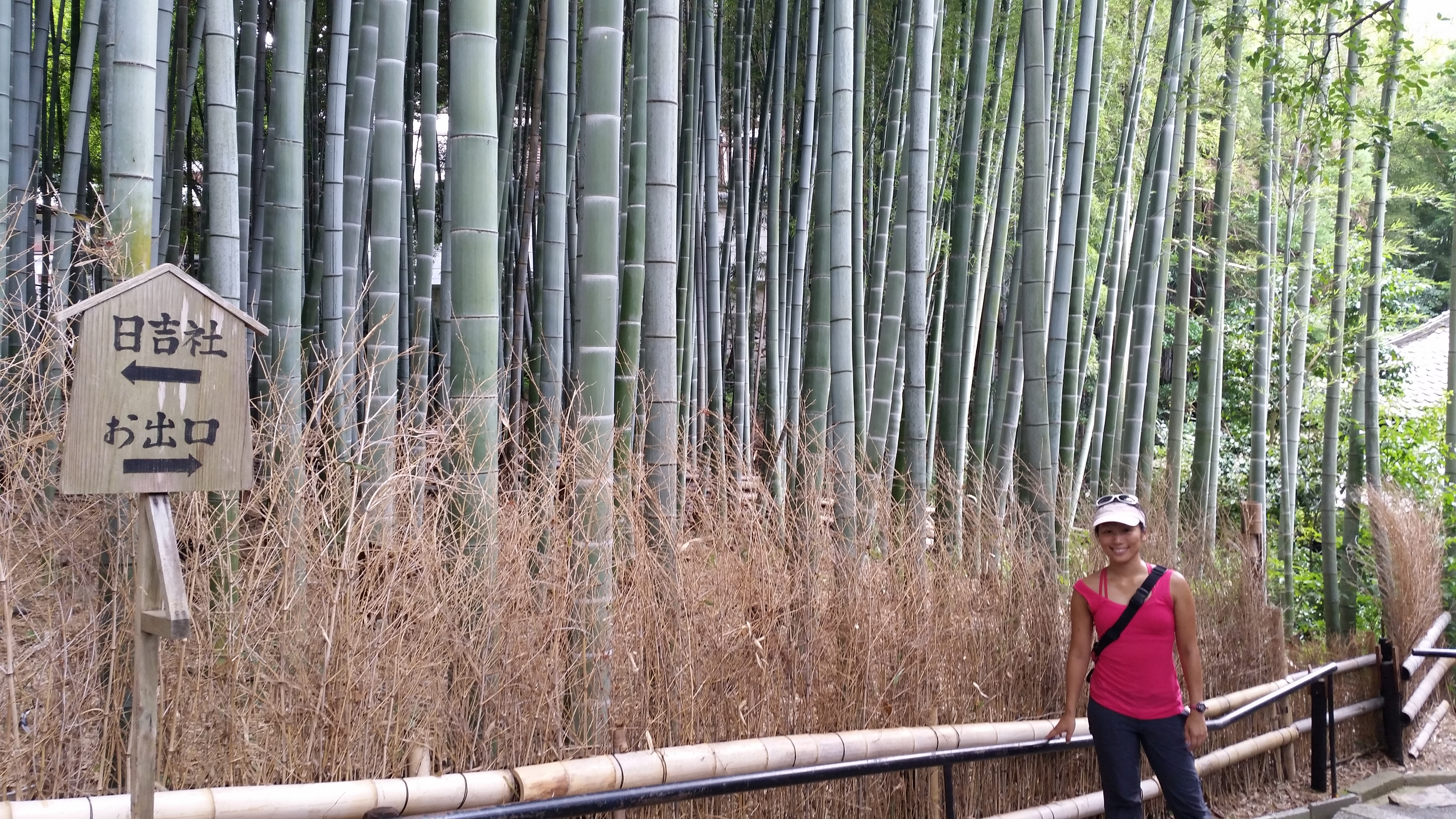
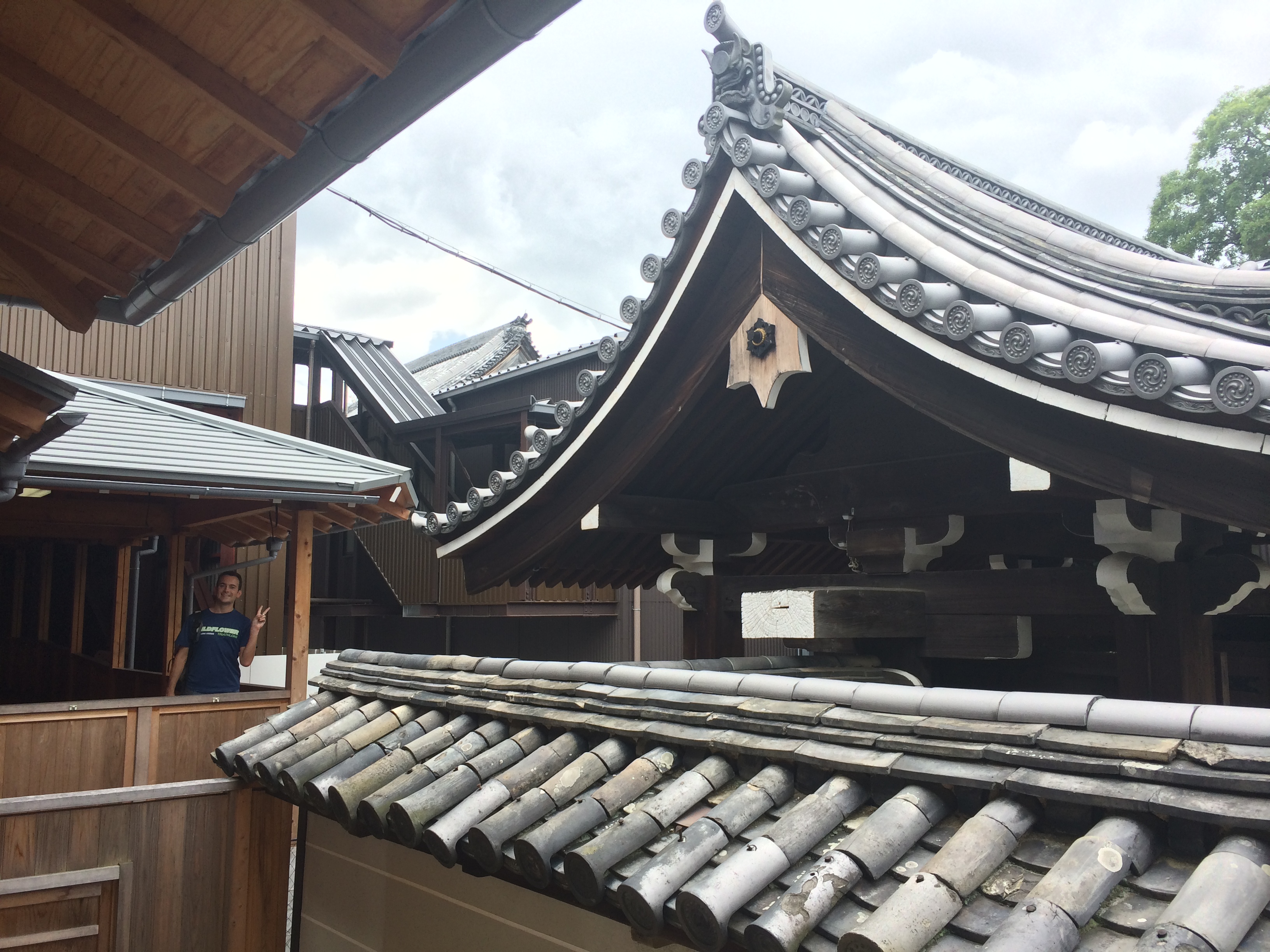
Just down the street was Shoren-in, a temple originally designed for a residence. Because tour groups always skip this place, we enjoyed the serene and quiet Japanese garden.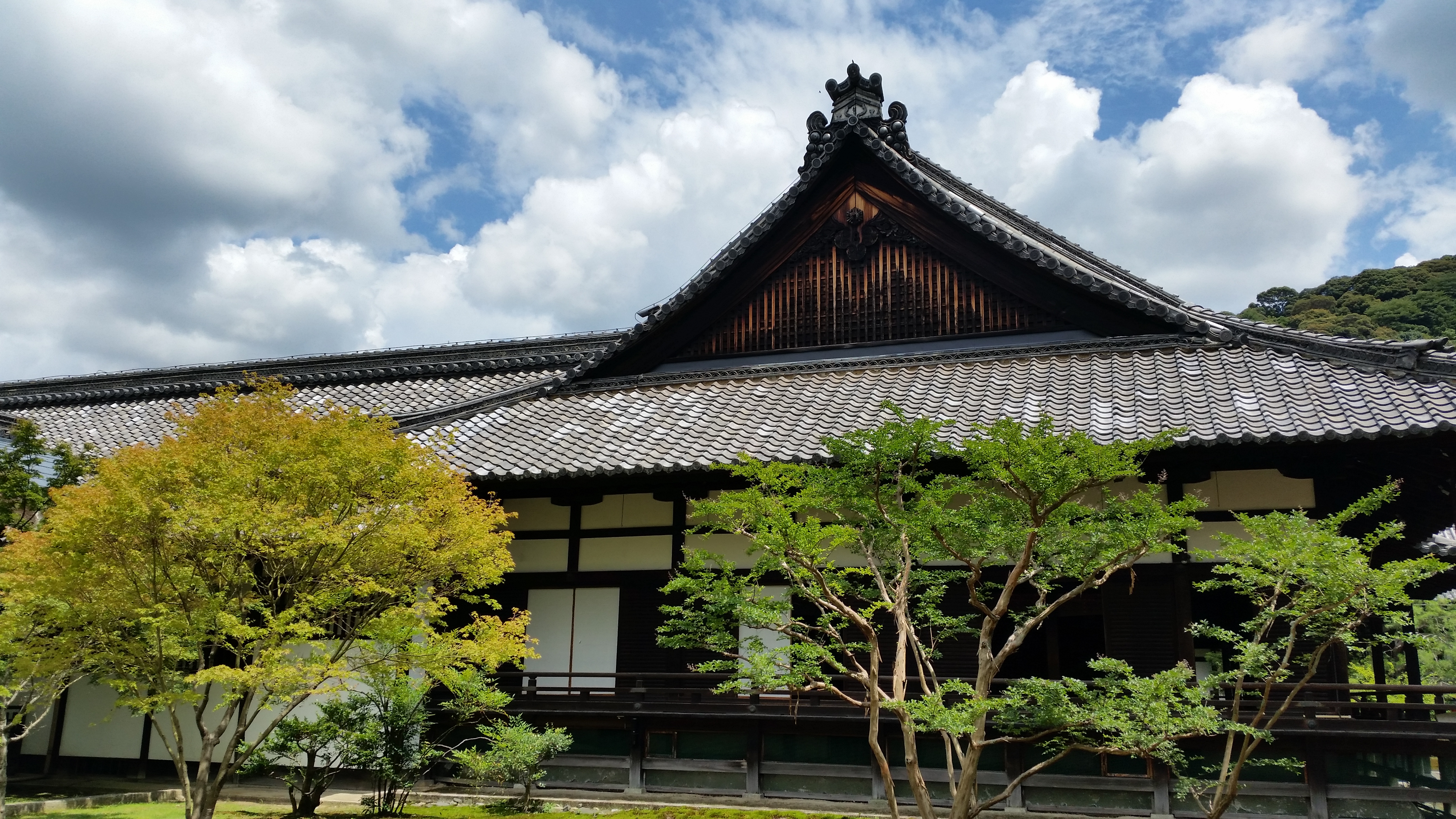
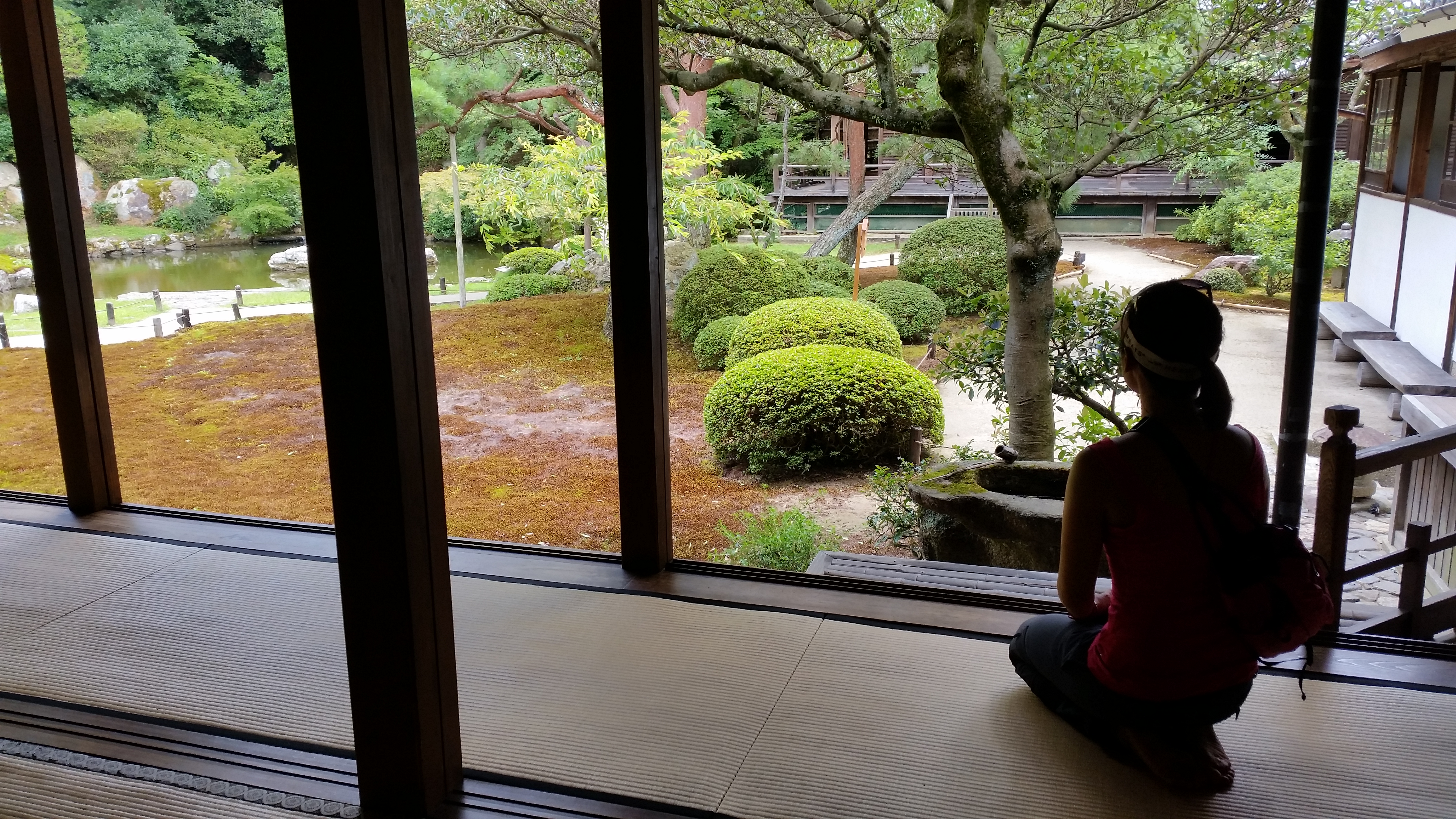
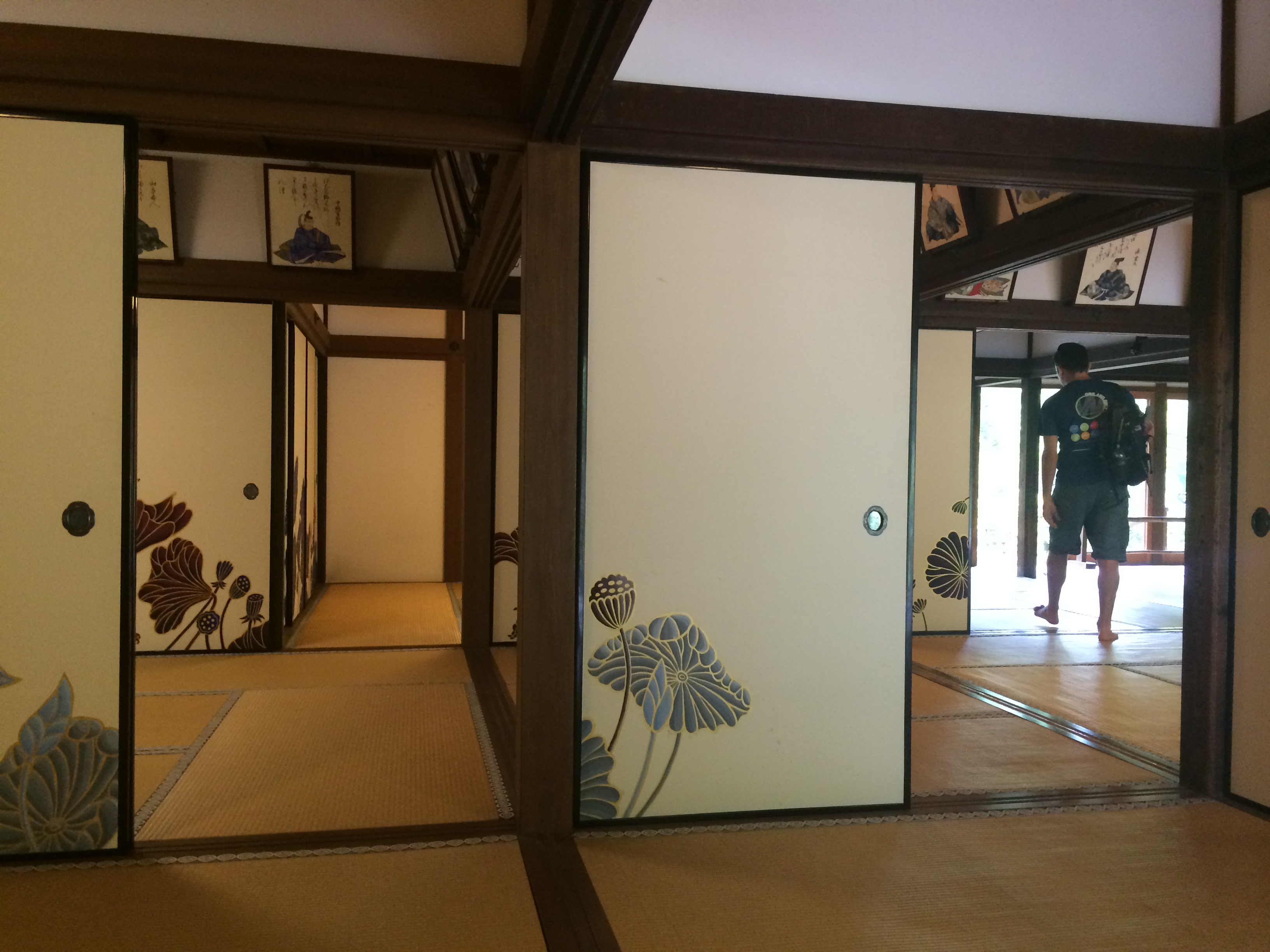

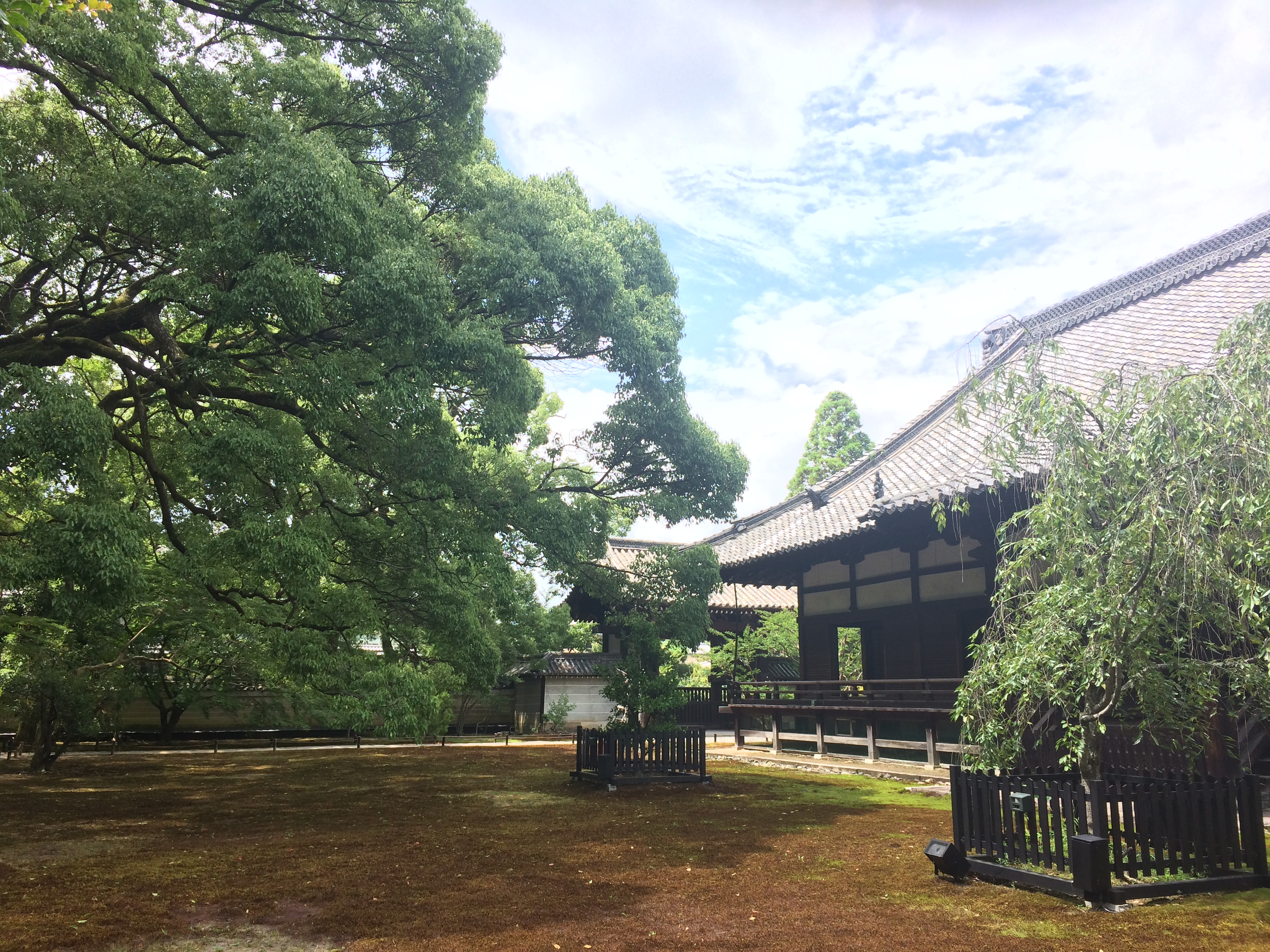
Noon rolled around so we returned to Central Kyoto where we ate lunch and explored the traditional Nishiki Market.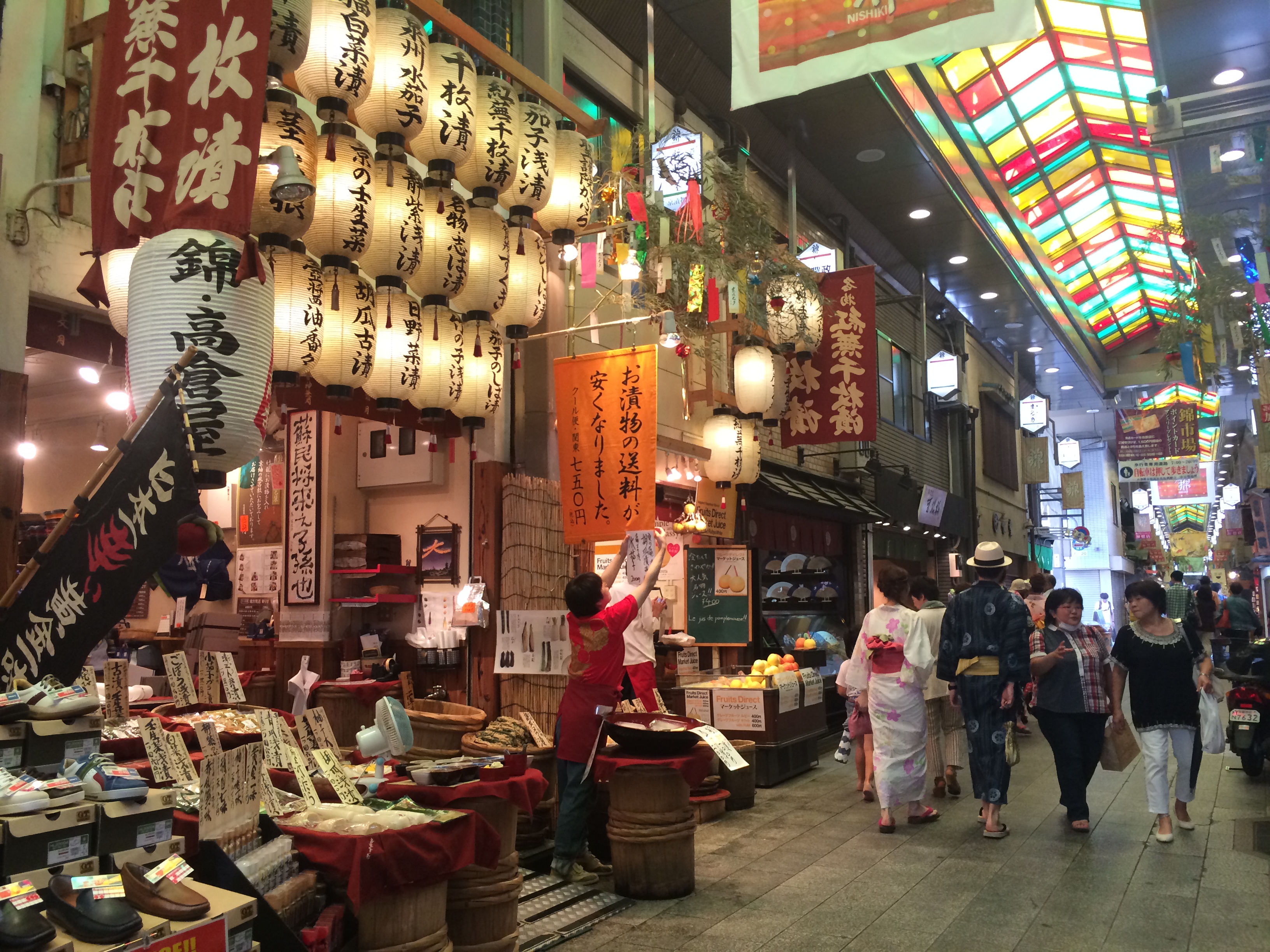
Nijo Castle, originally a residence for shoguns, wasn’t too far away. This castle was MASSIVE and came with fortifications and a moat.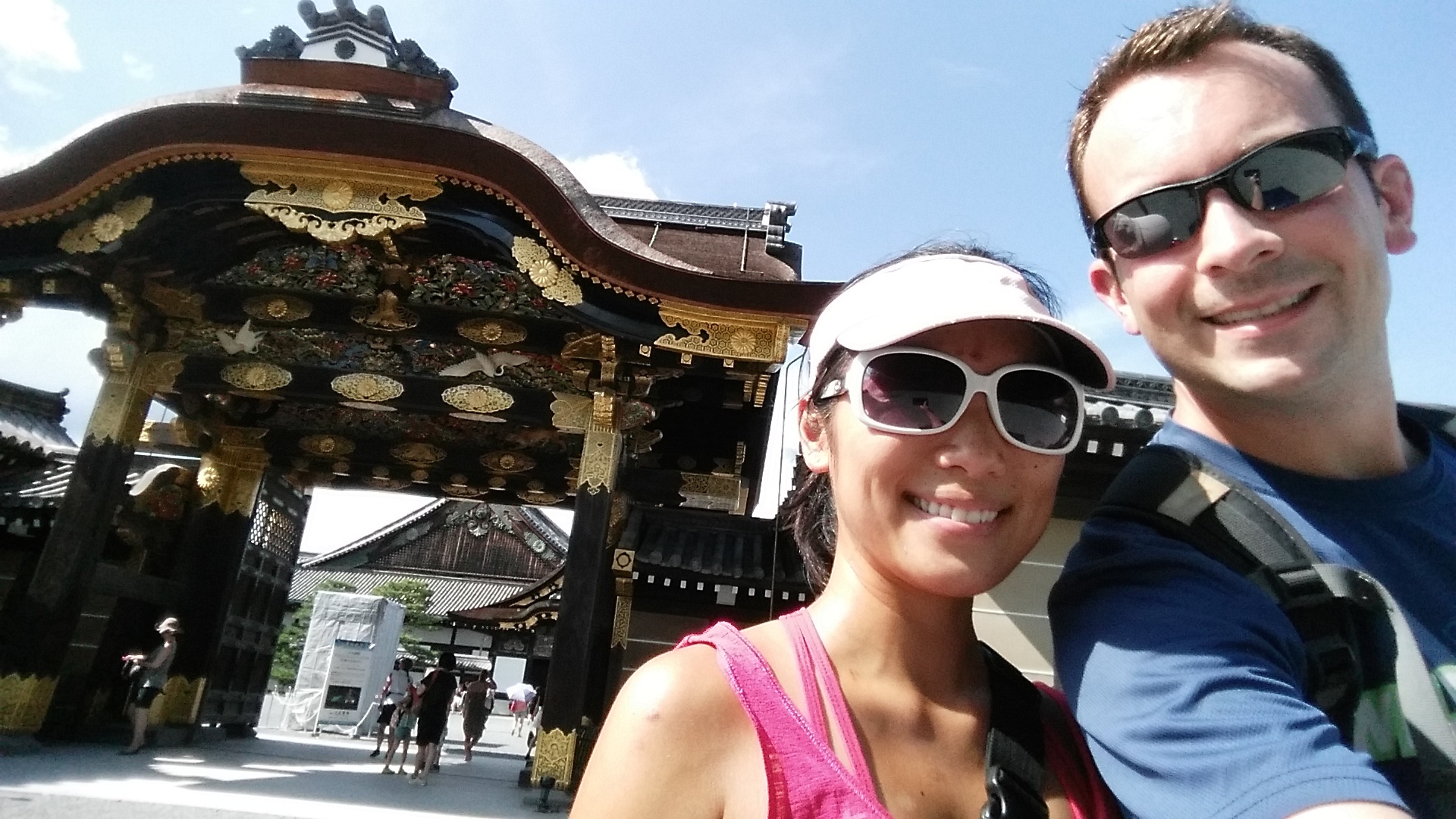
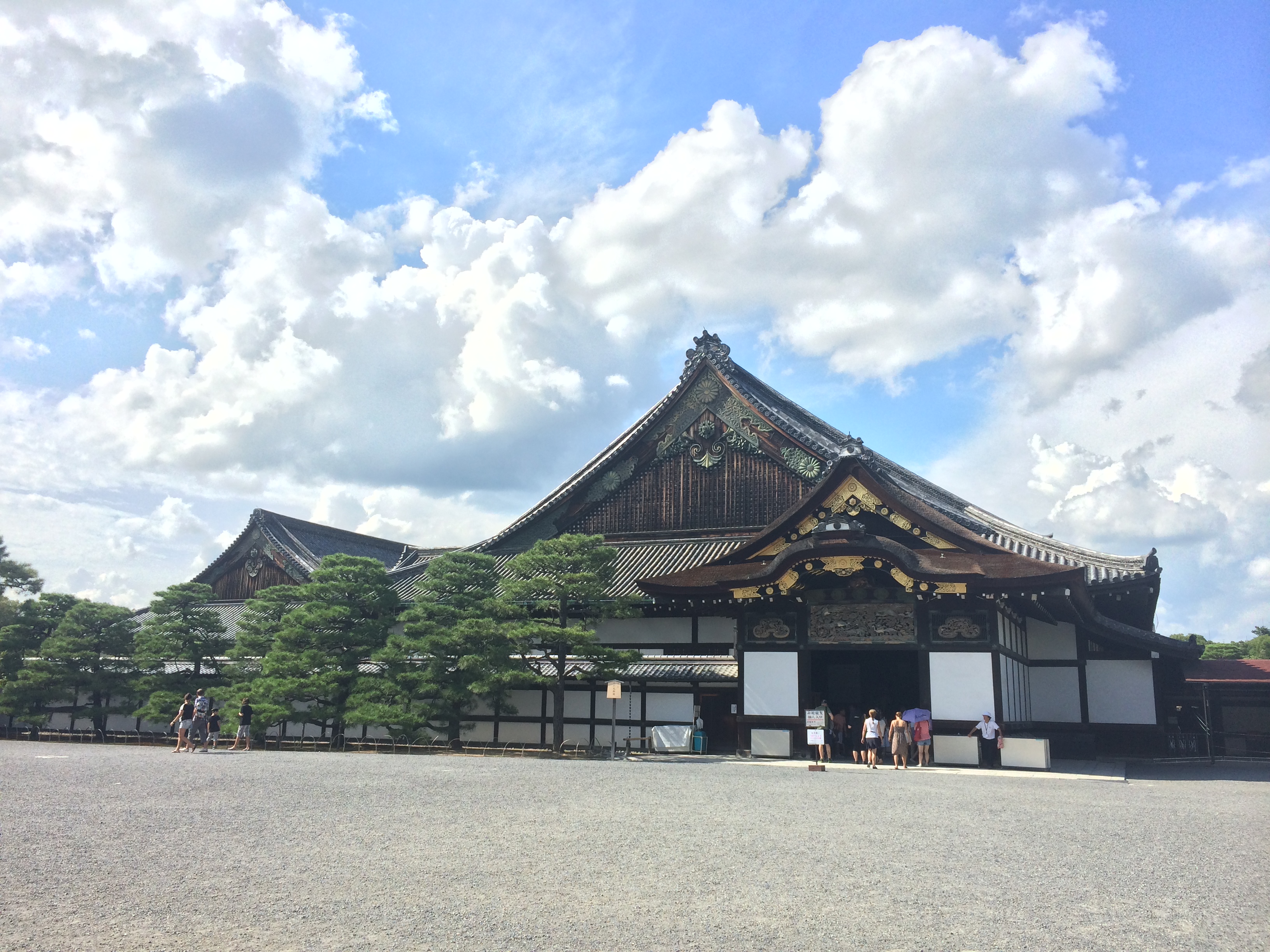
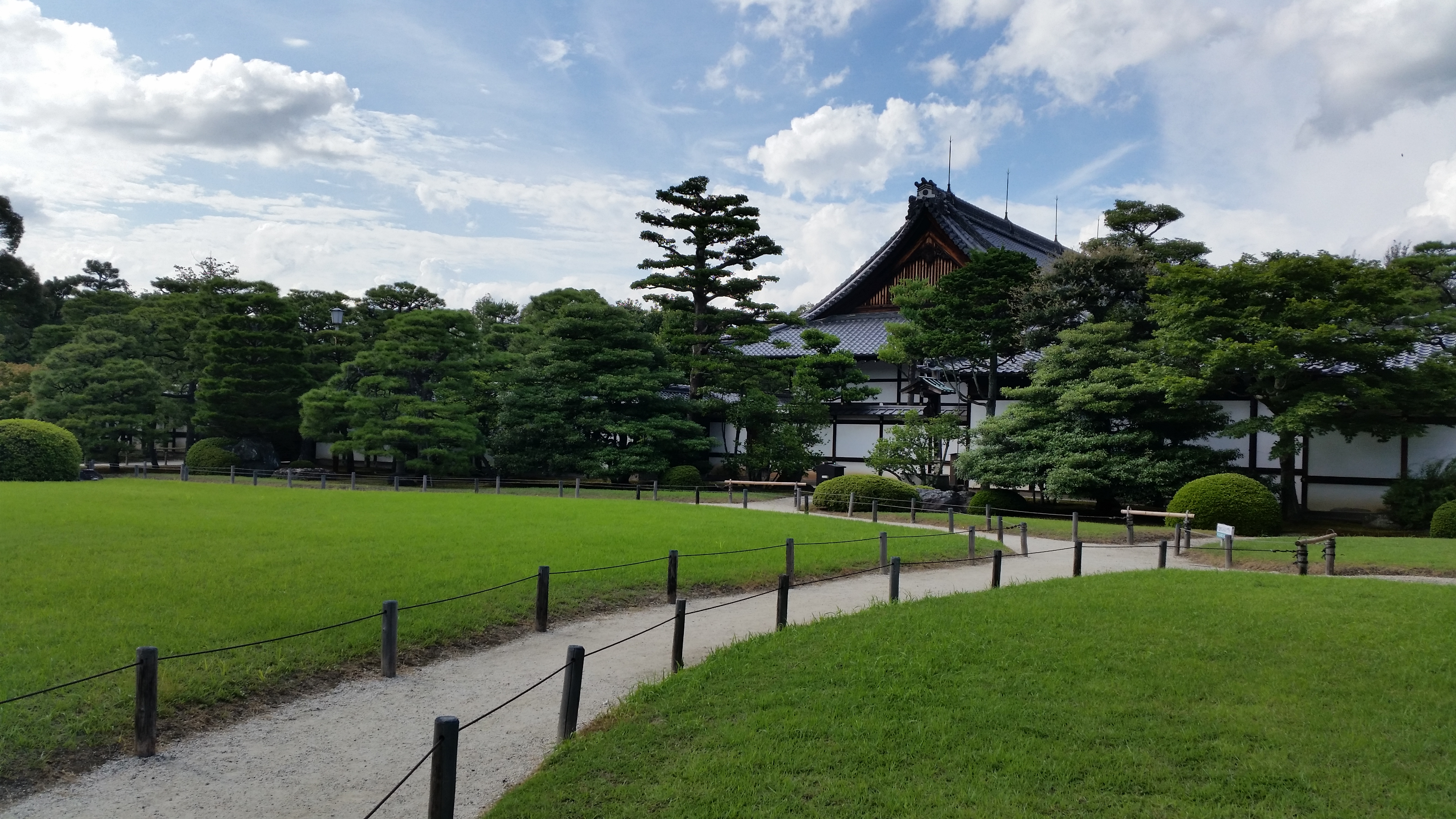
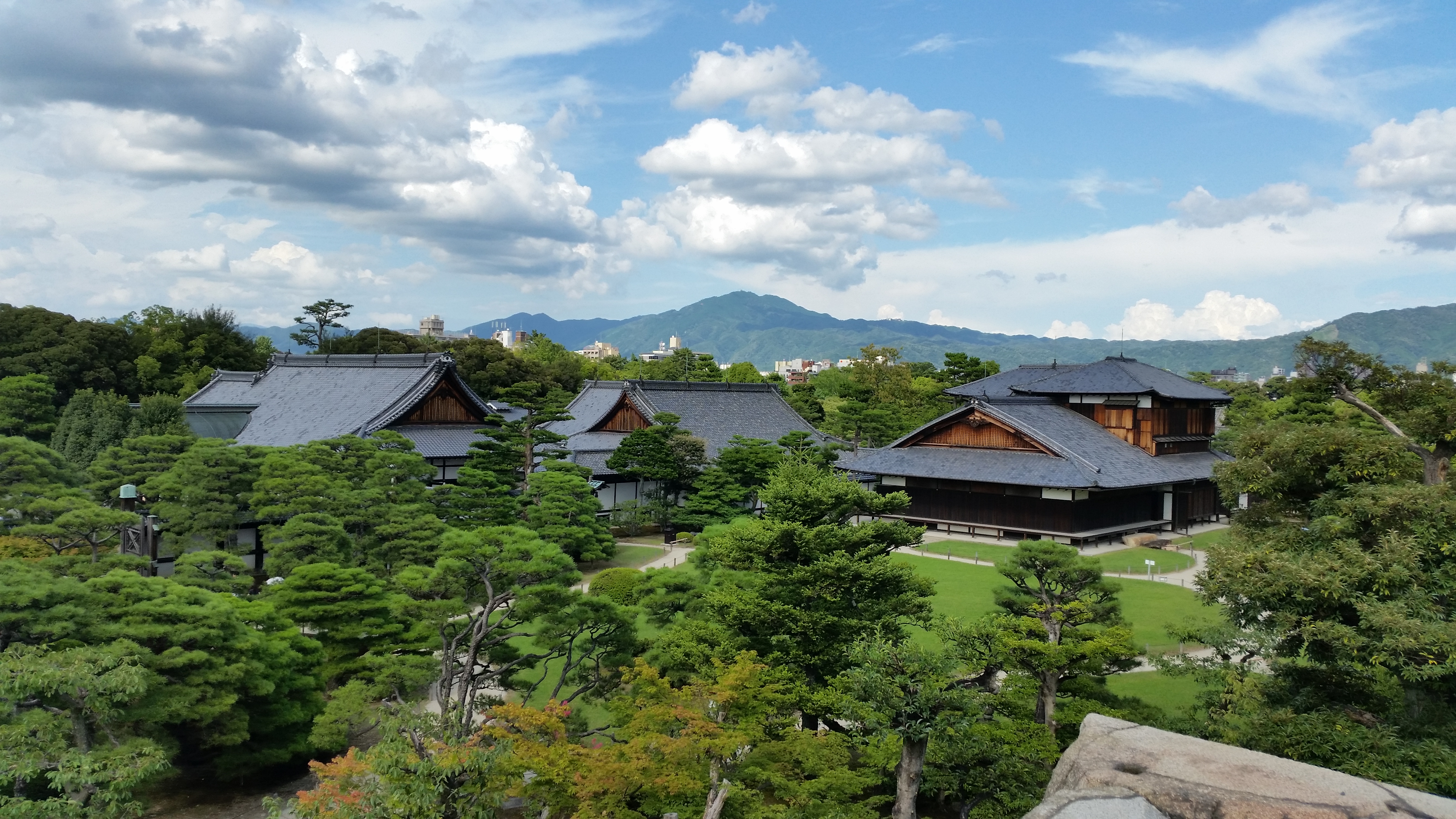
I saved Fushimi-Inari Taisha for last, which is considered THE most impressive place in Kyoto. Literally hundreds of red shrine gates line a number of paths into the Kyoto mountains, creating a fantastical and surreal experience as one disappears into the arms of the gates. We enthusiastically arrived just before dusk; shops were closing and the shrine was slowly emptying out. There were still a number of people, though the further up the mountain we traveled, the fewer tourists there were. We ended up walking to the peak of the mountain since it wasn’t difficult. The road leading up to the shrine: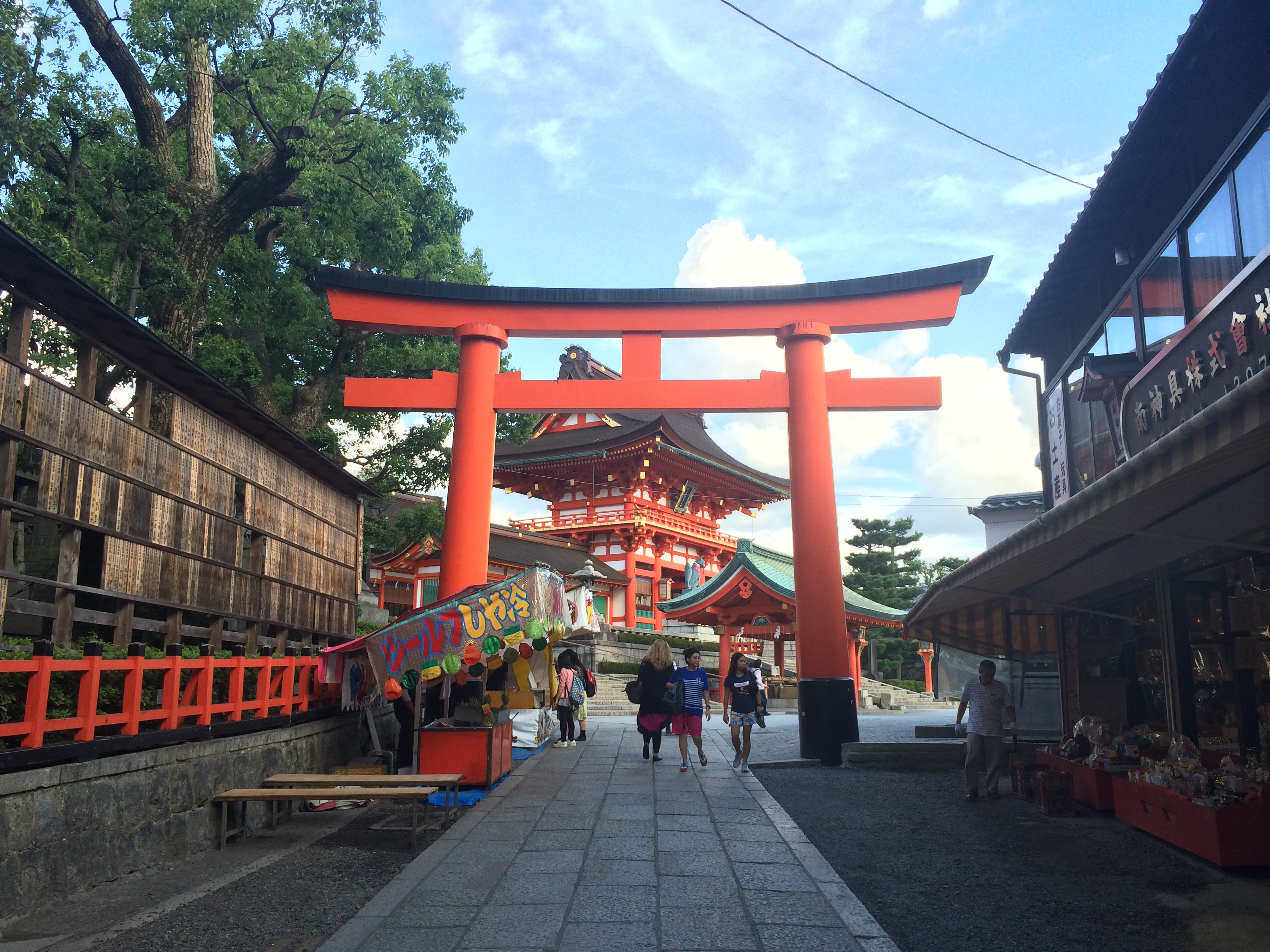
In certain areas, the gates were more spaced apart.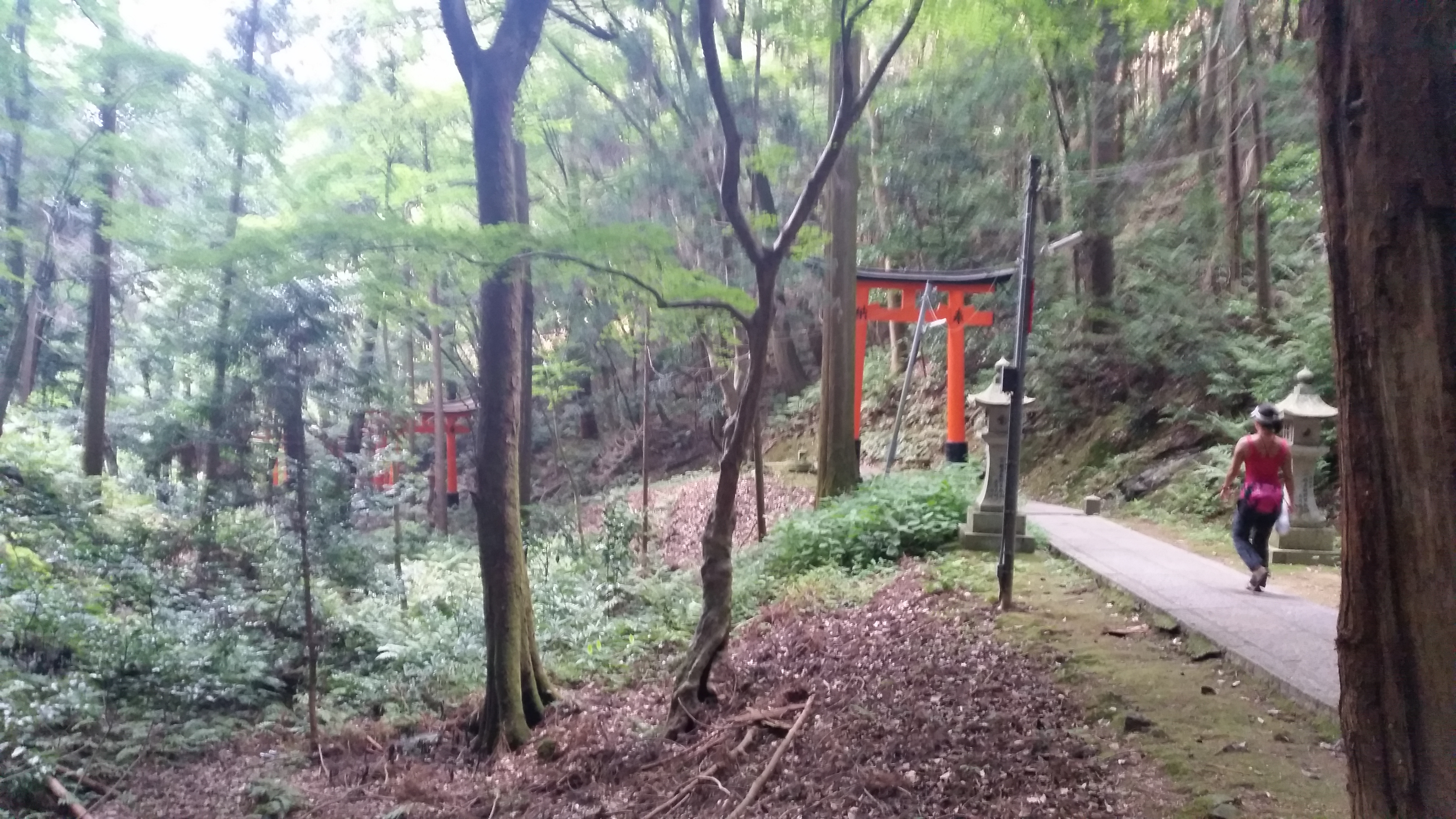
We would pass by a number of shrines.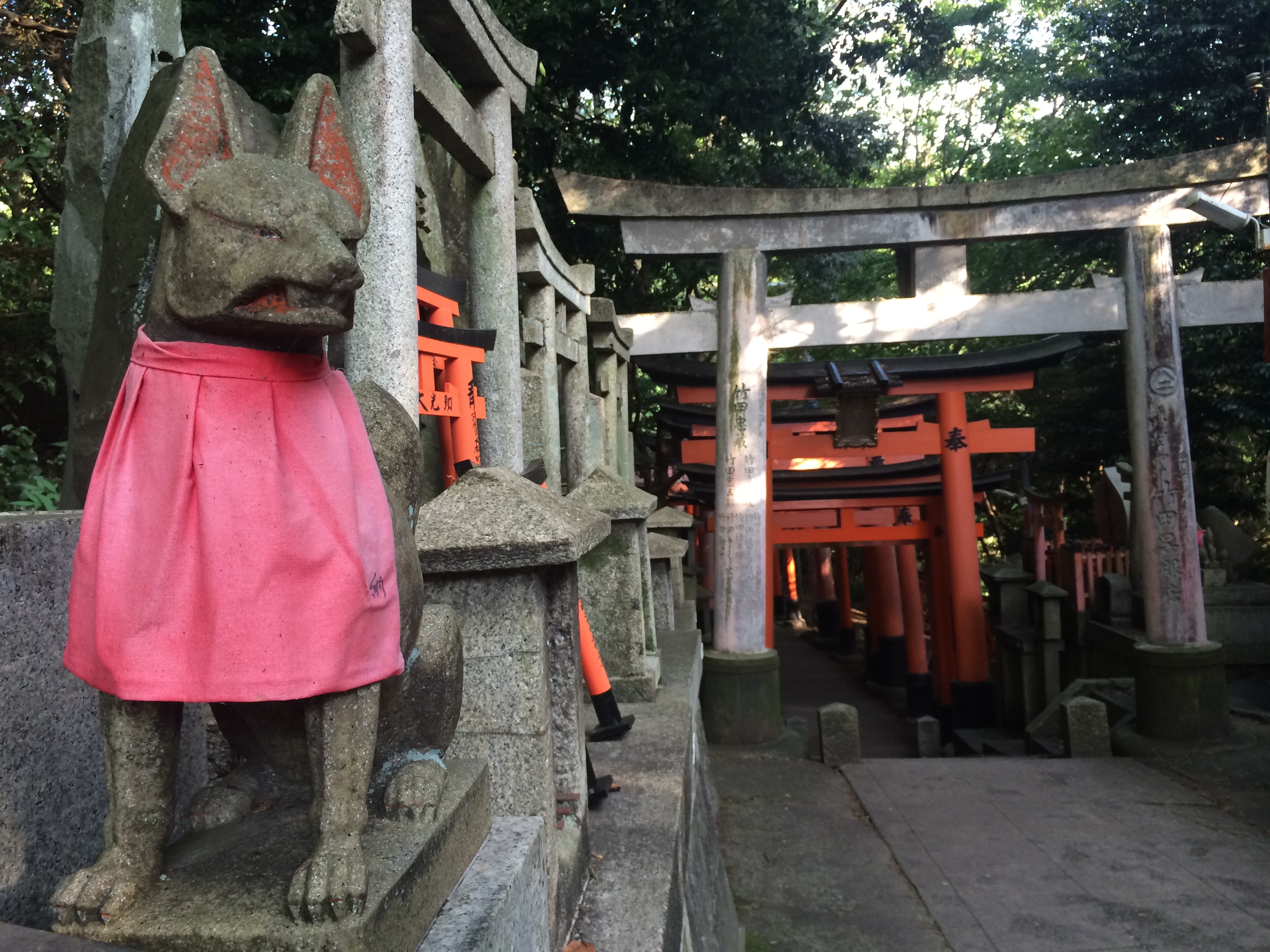
Running around temple-hopping in Kyoto on an incredibly hot summer day drove us both of to complete exhaustion. Fortunately we got the most out of Day 1, with just a few more to go on Day 2.
Day 2
We ventured over to the Arashiyama district of Kyoto, famed for its bamboo grove and gardens. Tenryu-ji was our first stop.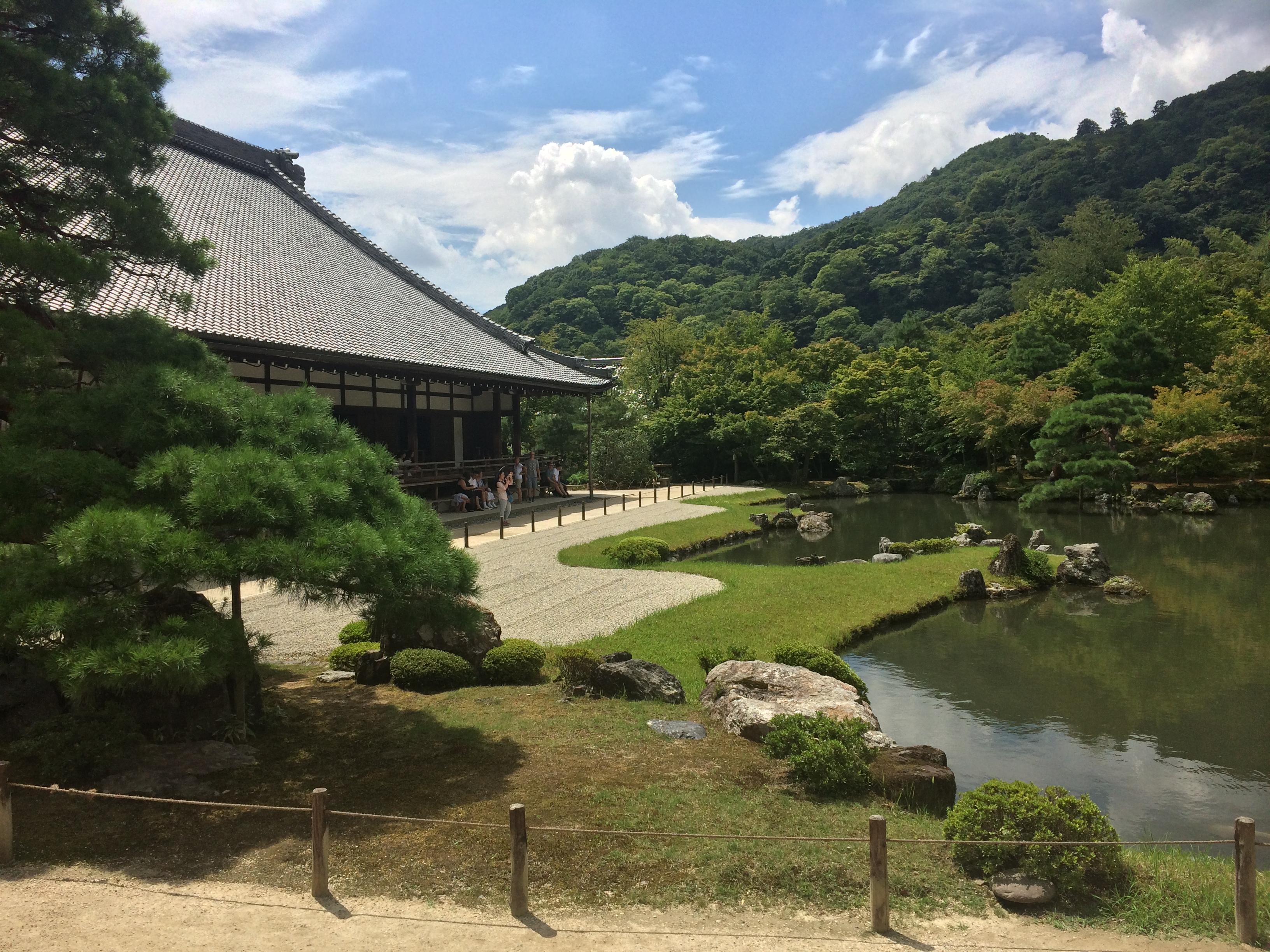
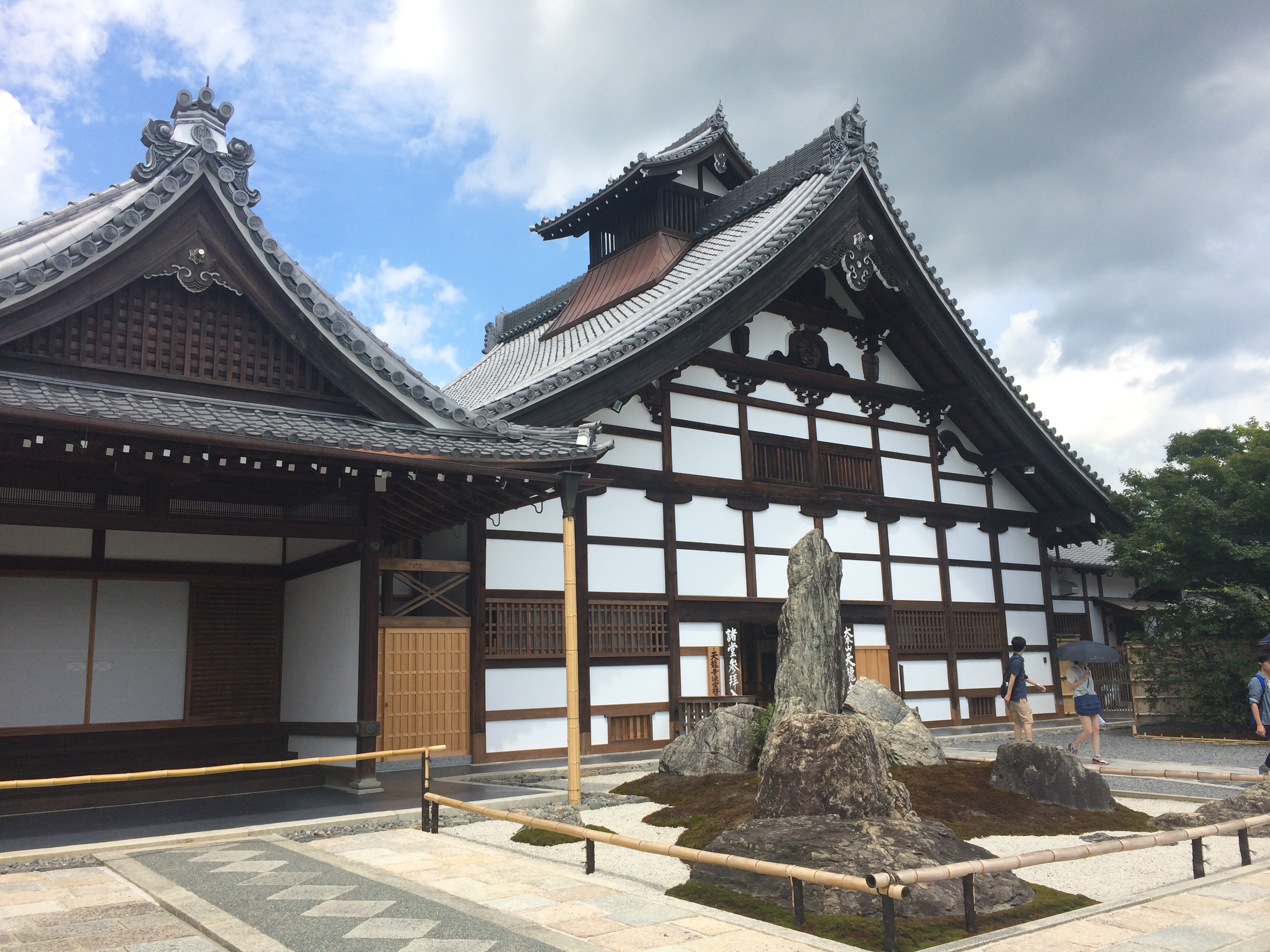
From there it was a quick stroll to the incredible Bamboo Grove. 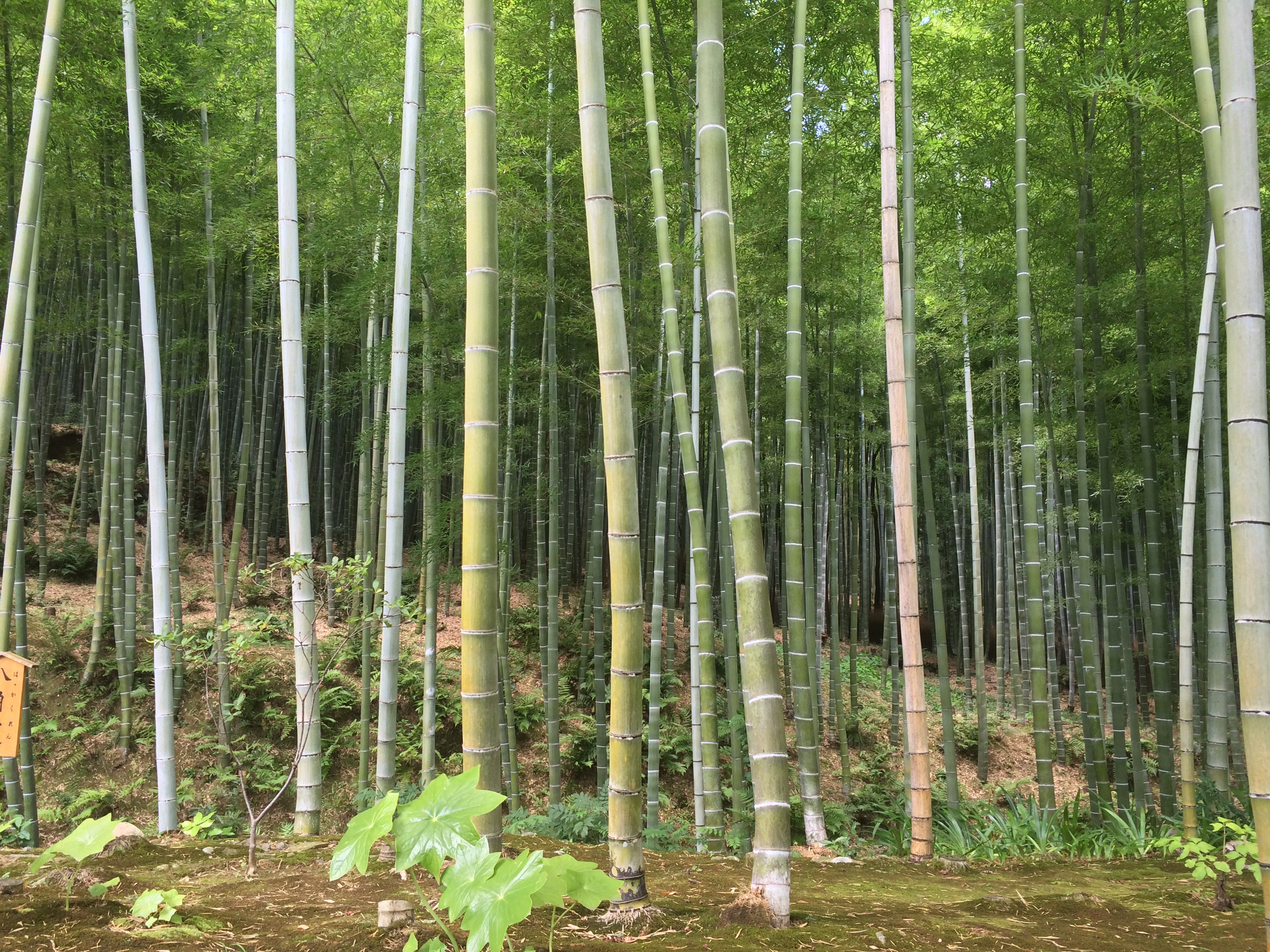
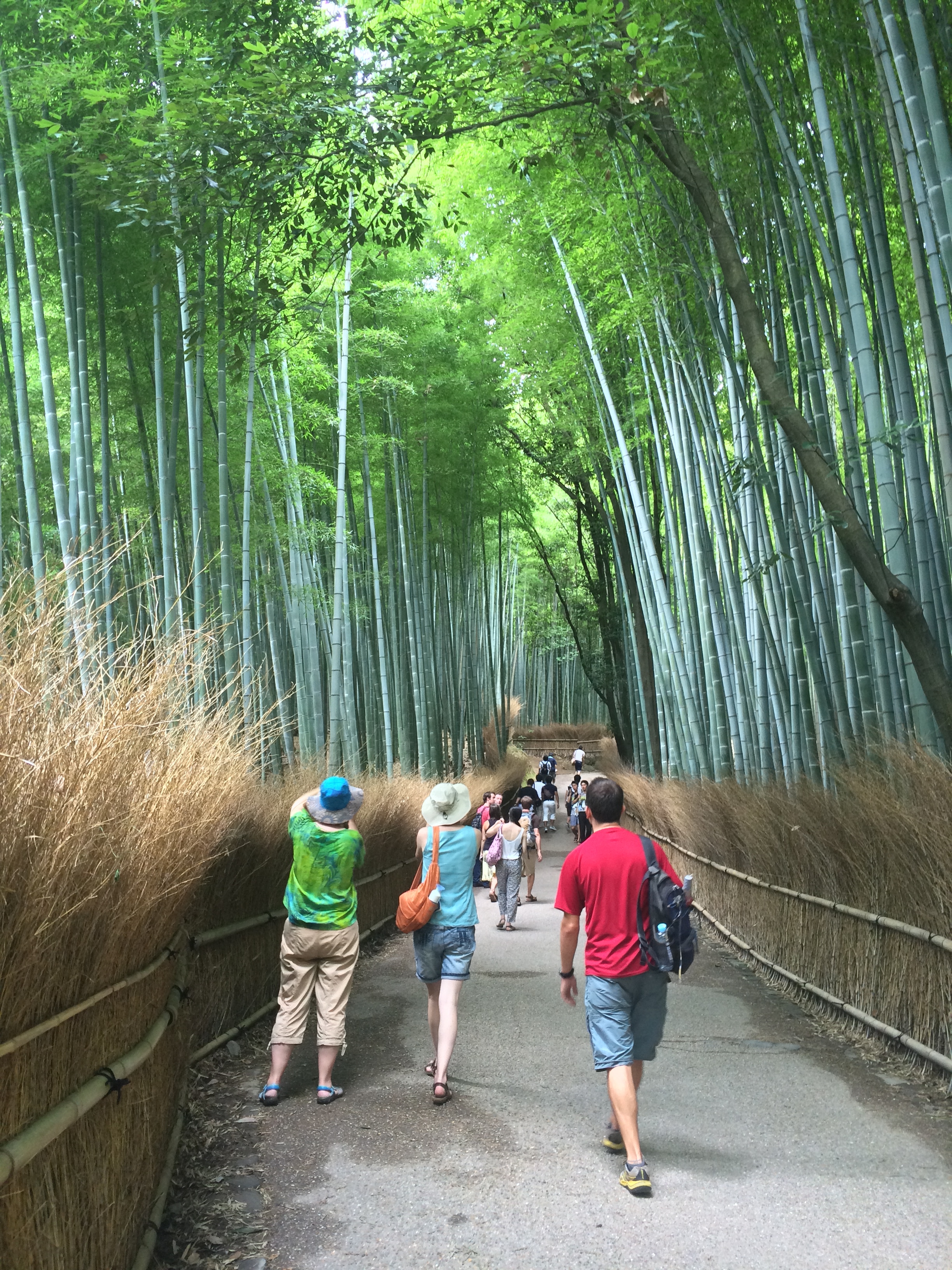

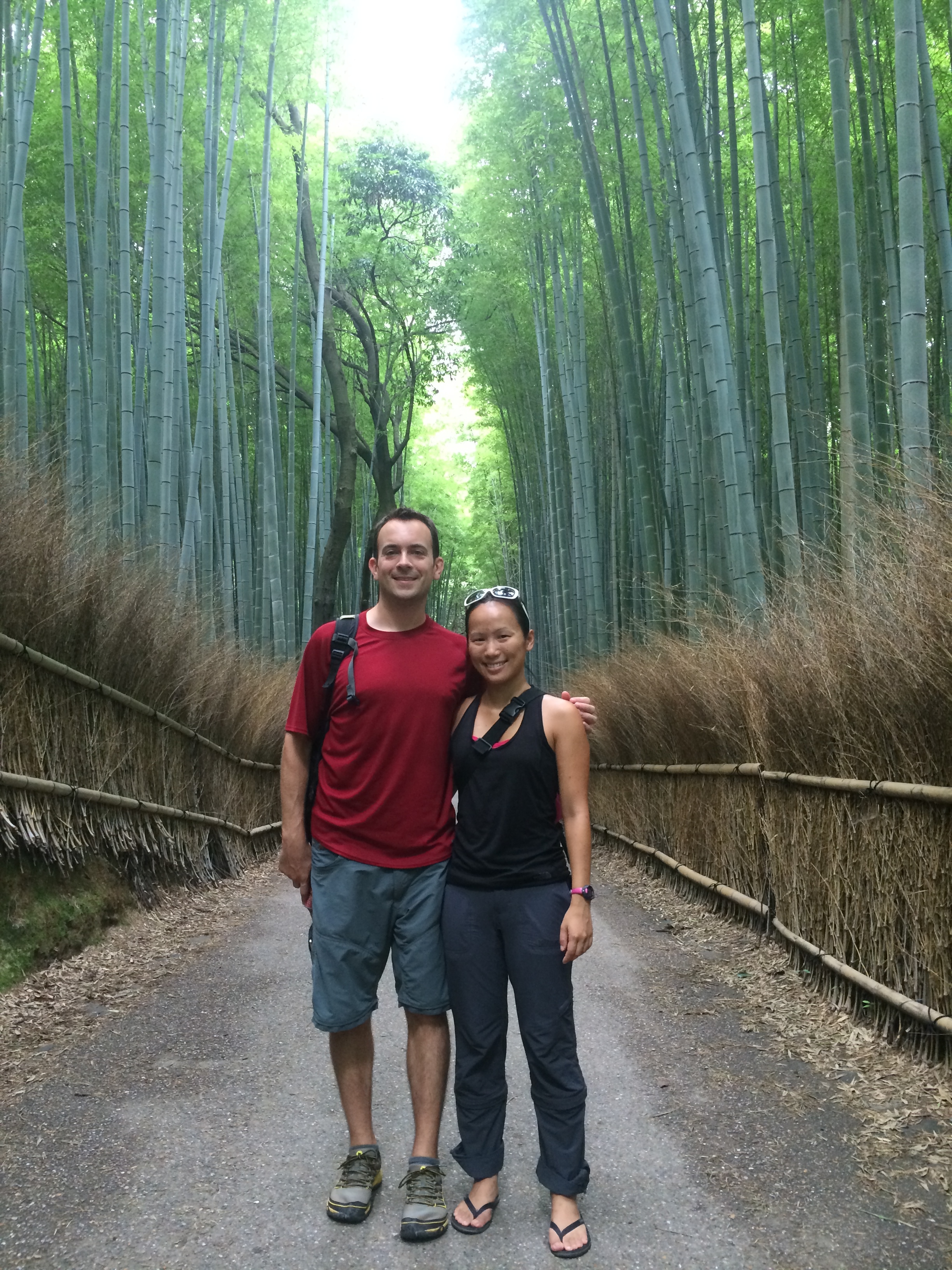
Then it was a detour in the fork of the road to Okochi-Sanso Villa. We believe the costly admission of ¥1000 is designed to keep out tour groups. 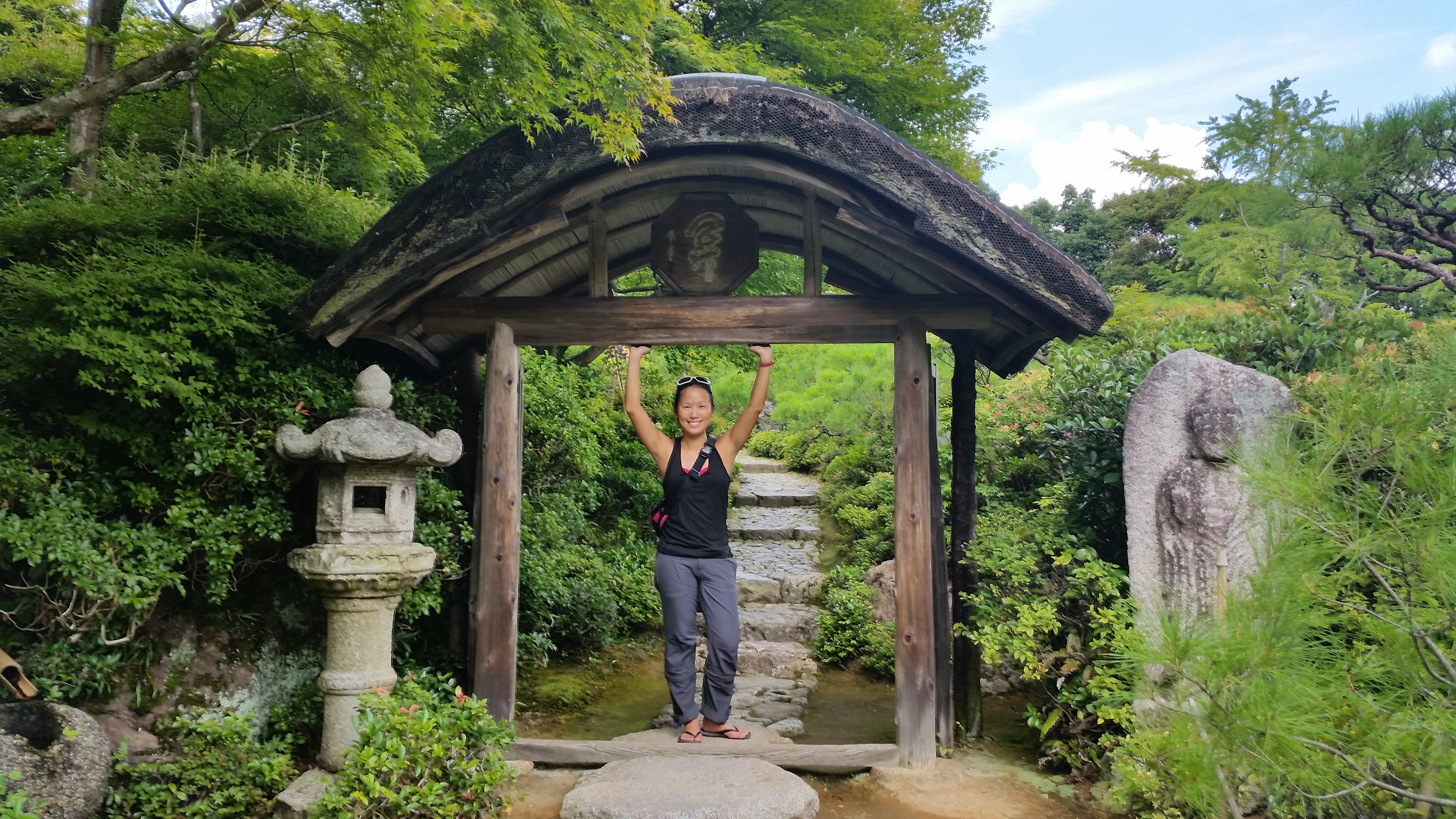
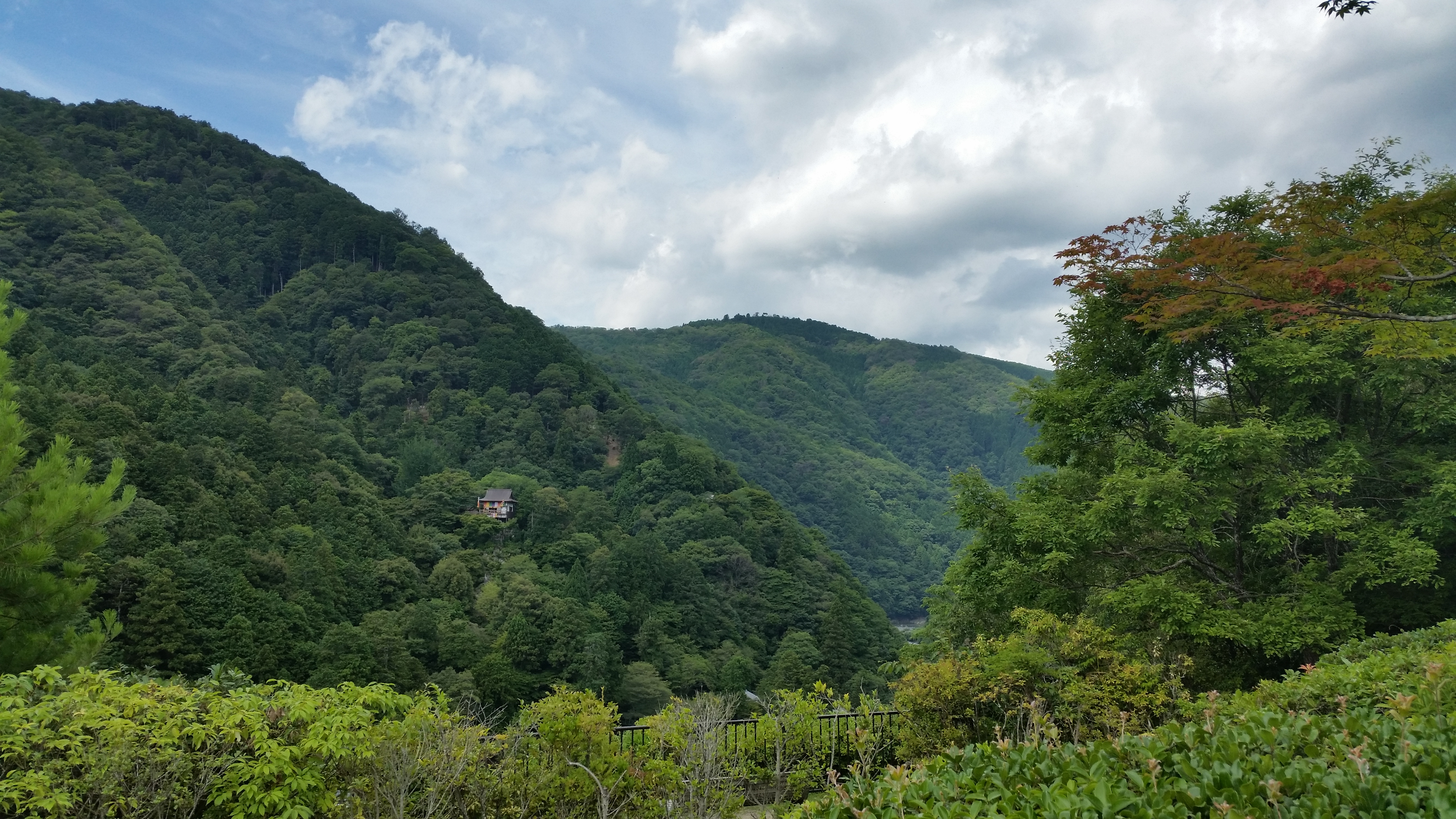
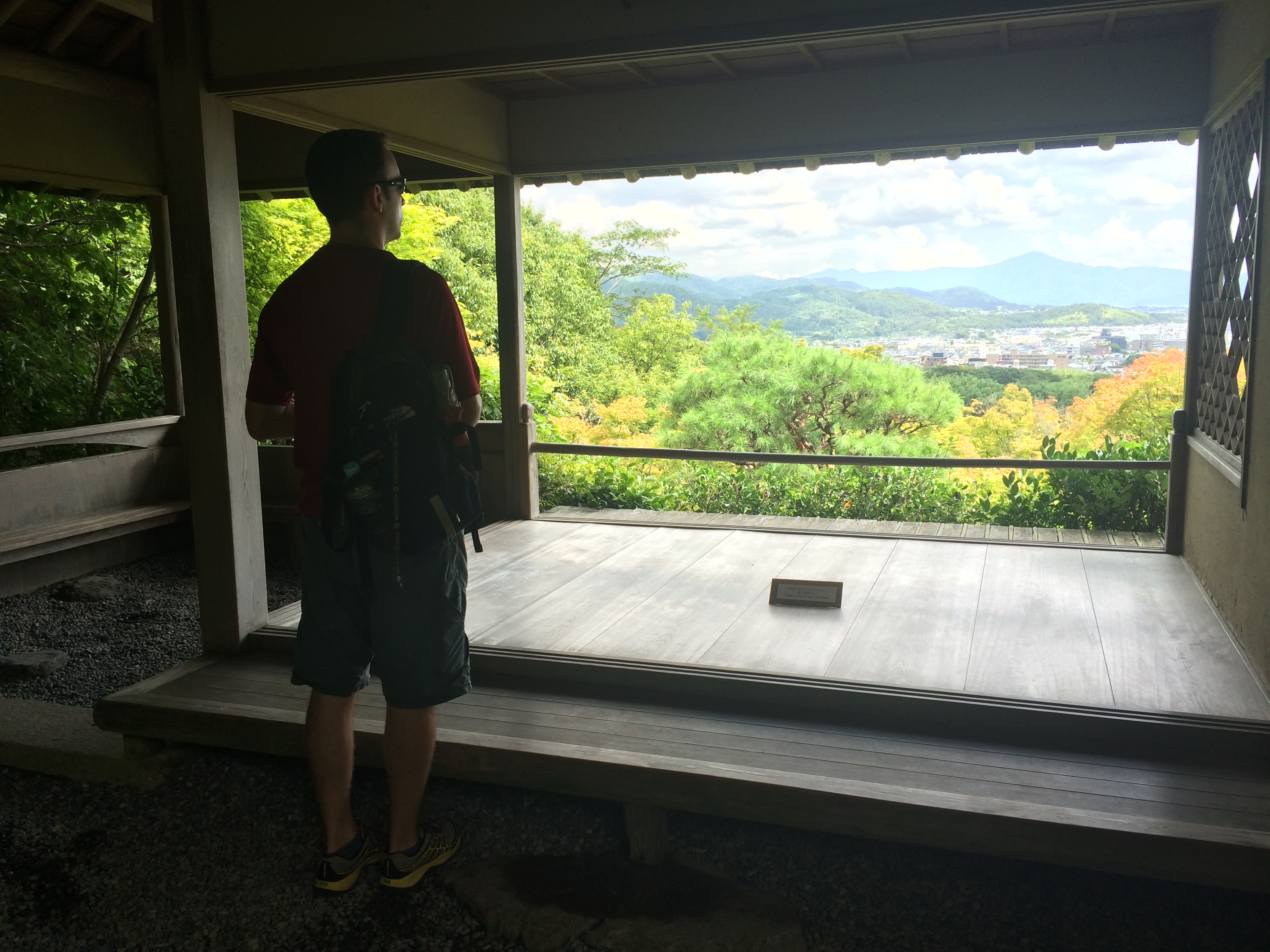
Admission includes matcha tea and a treat in their quaint tea house nestled in bamboo.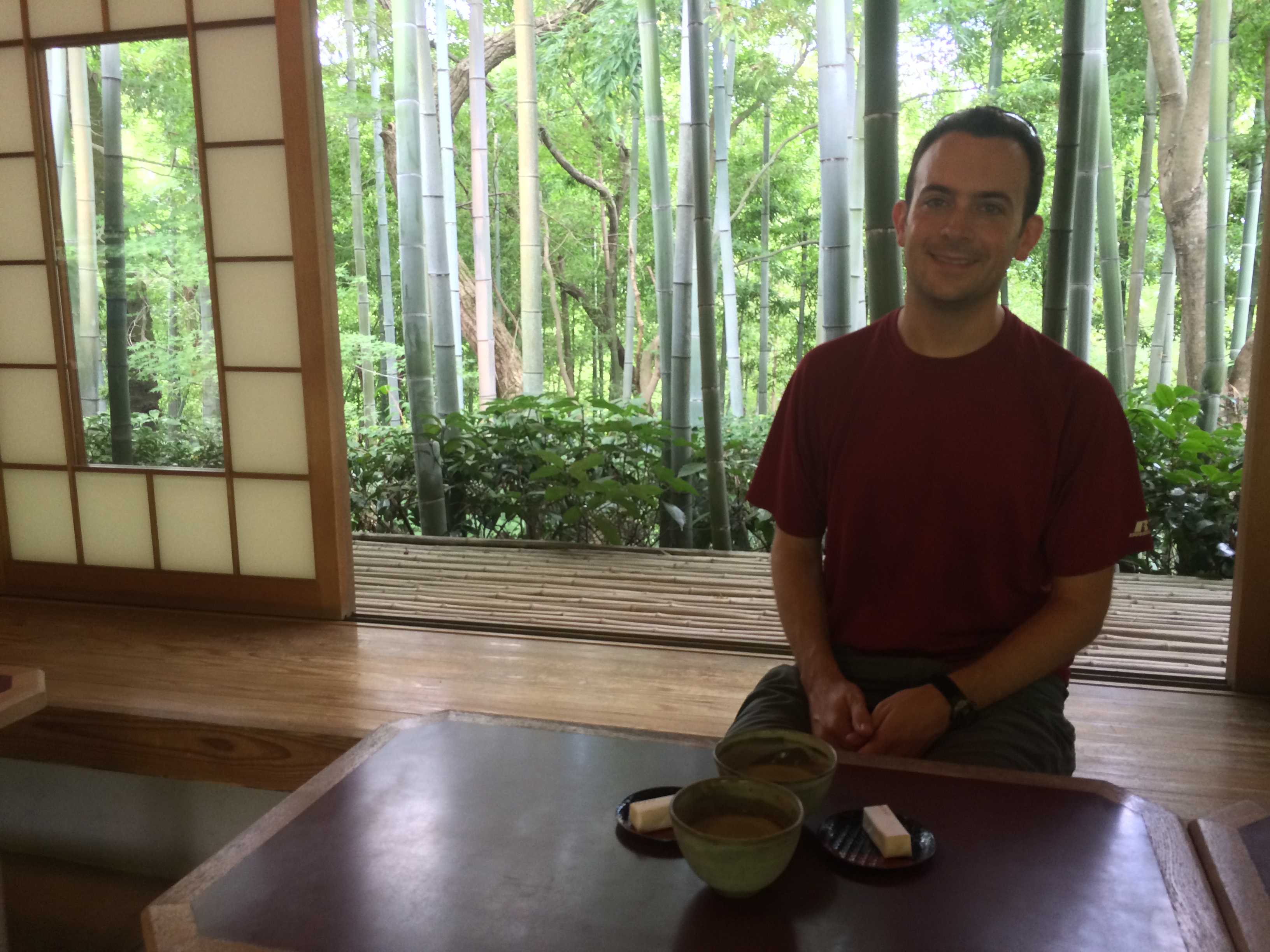
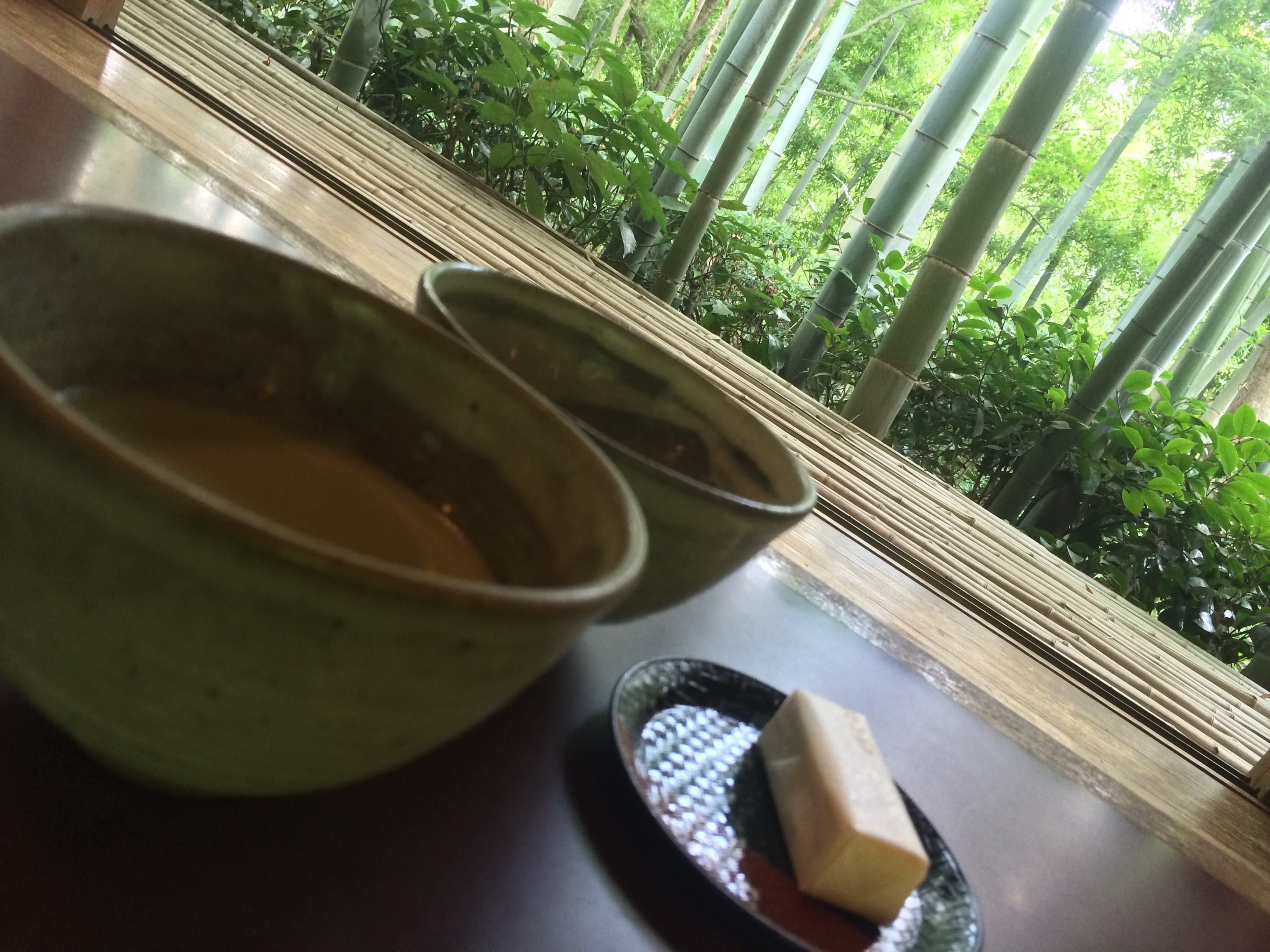
A quick lunch was scarfed down before proceeding to Kinkaku-ji, Kyoto’s famous and perhaps most photographed temple.
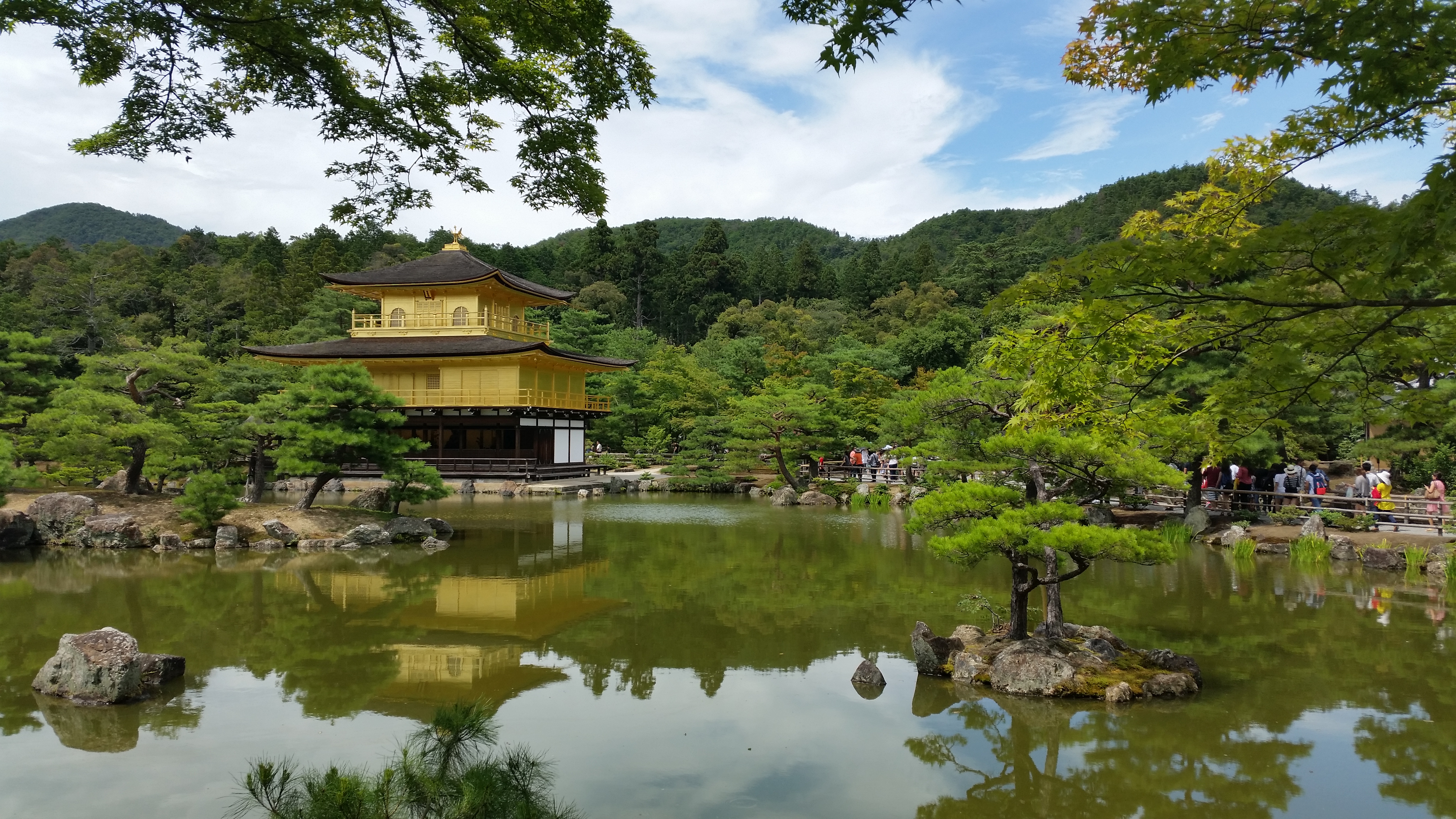
Finally, we ended up at the enormous complex of the Daitoku-ji Zen temples. The Daitoku-ji subtemple was regrettably closed, so we walked over to the gardens of Koto-in. I can see why this place is highly visited in autumn.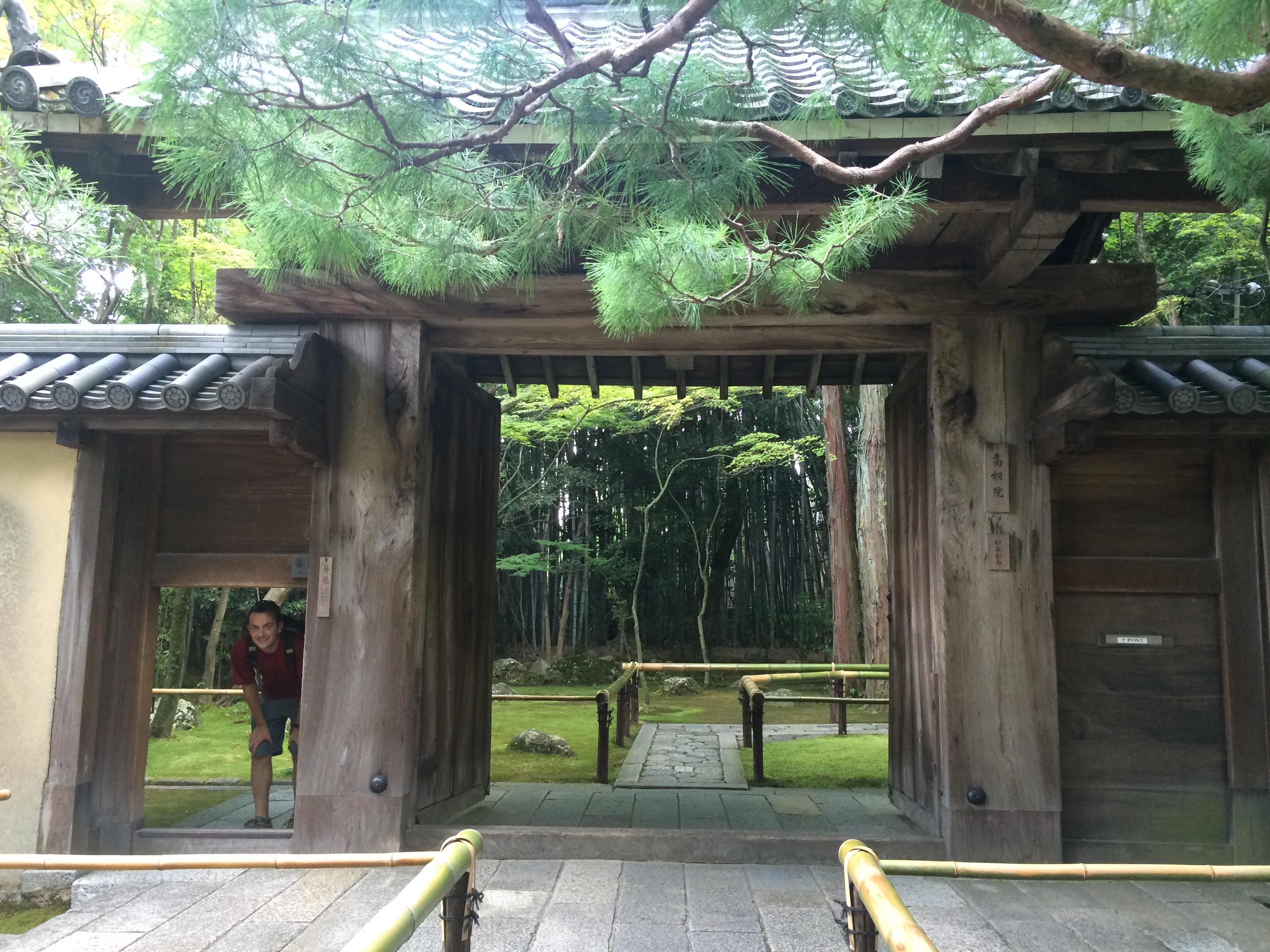
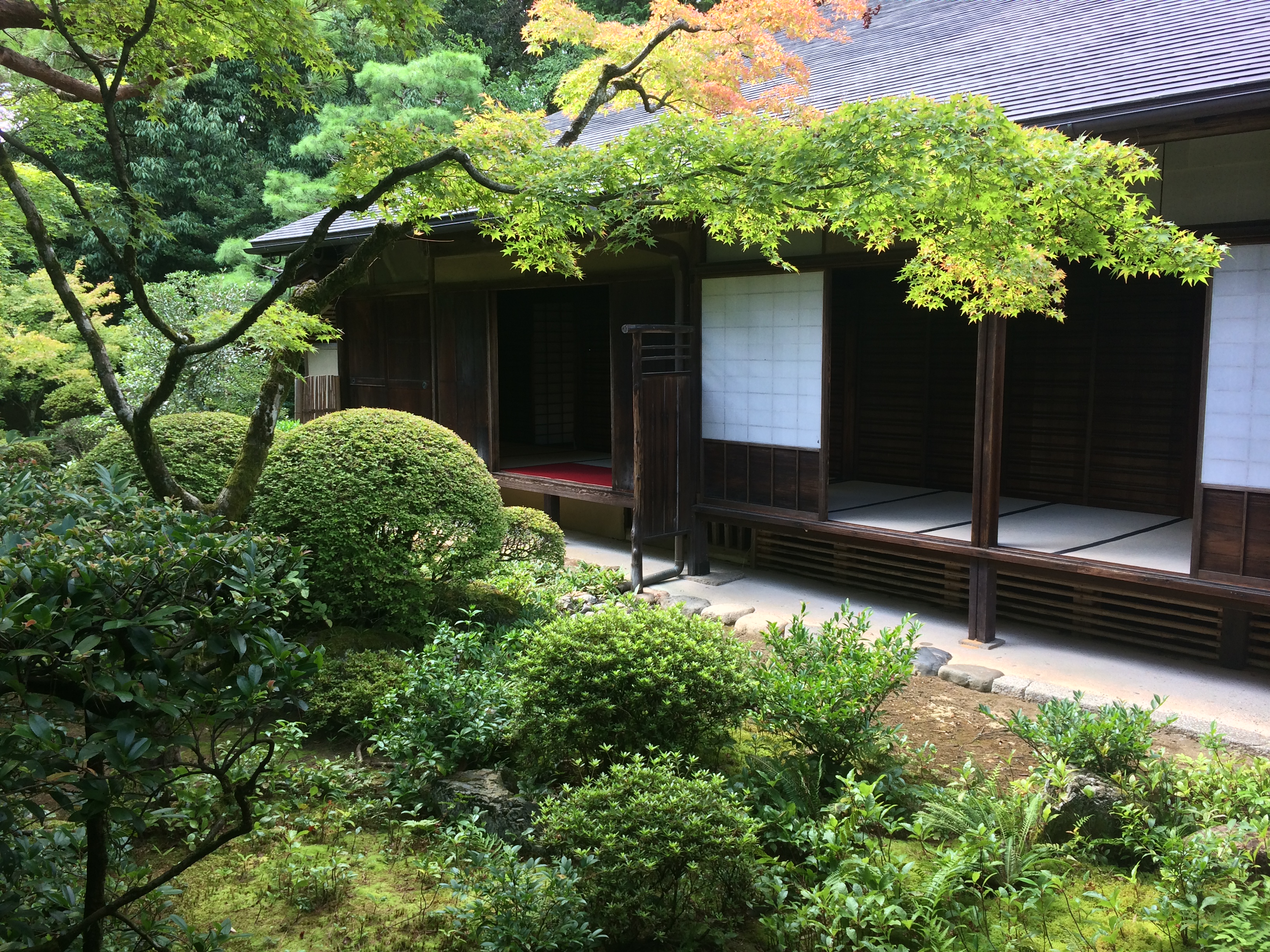
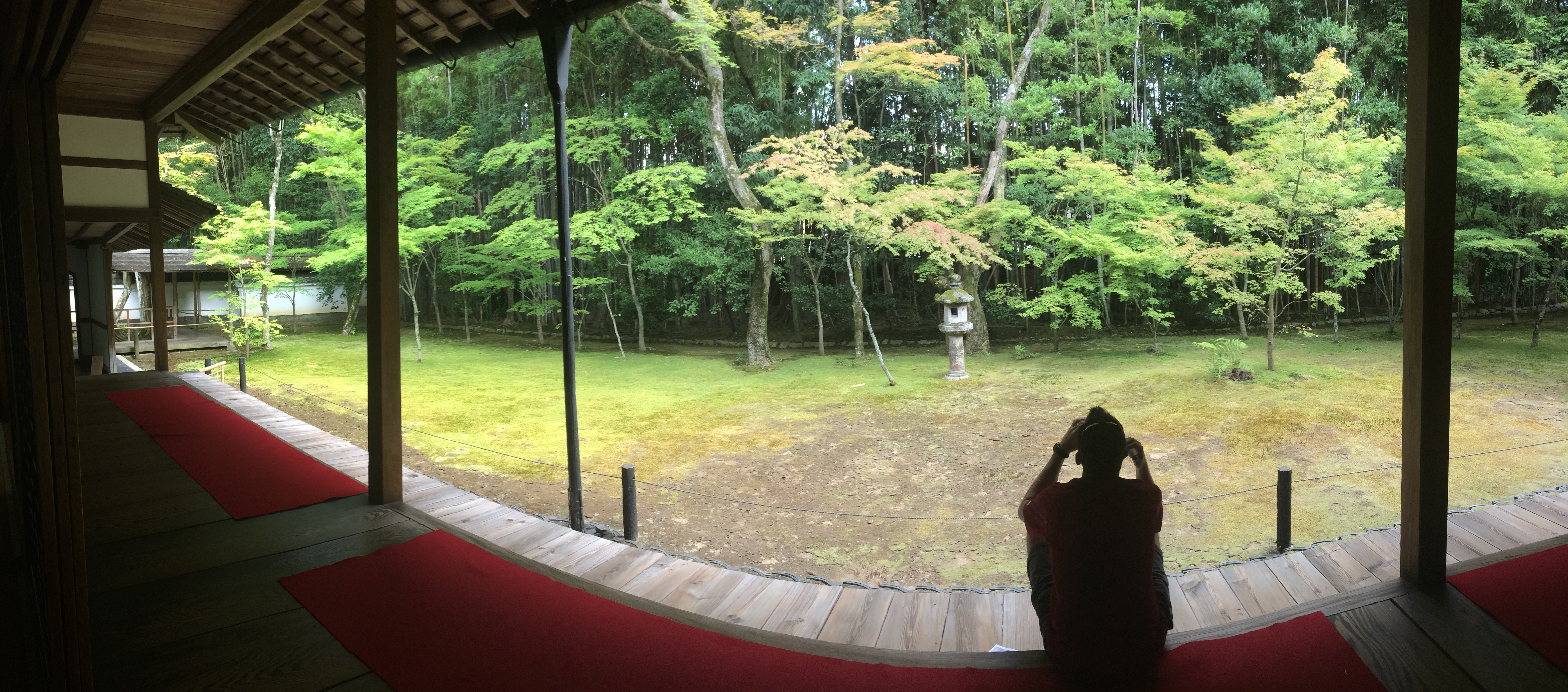
The mosquitos there quickly hurried us off to Ryogen-in, a subtemple housing a number of traditional Zen rock gardens.

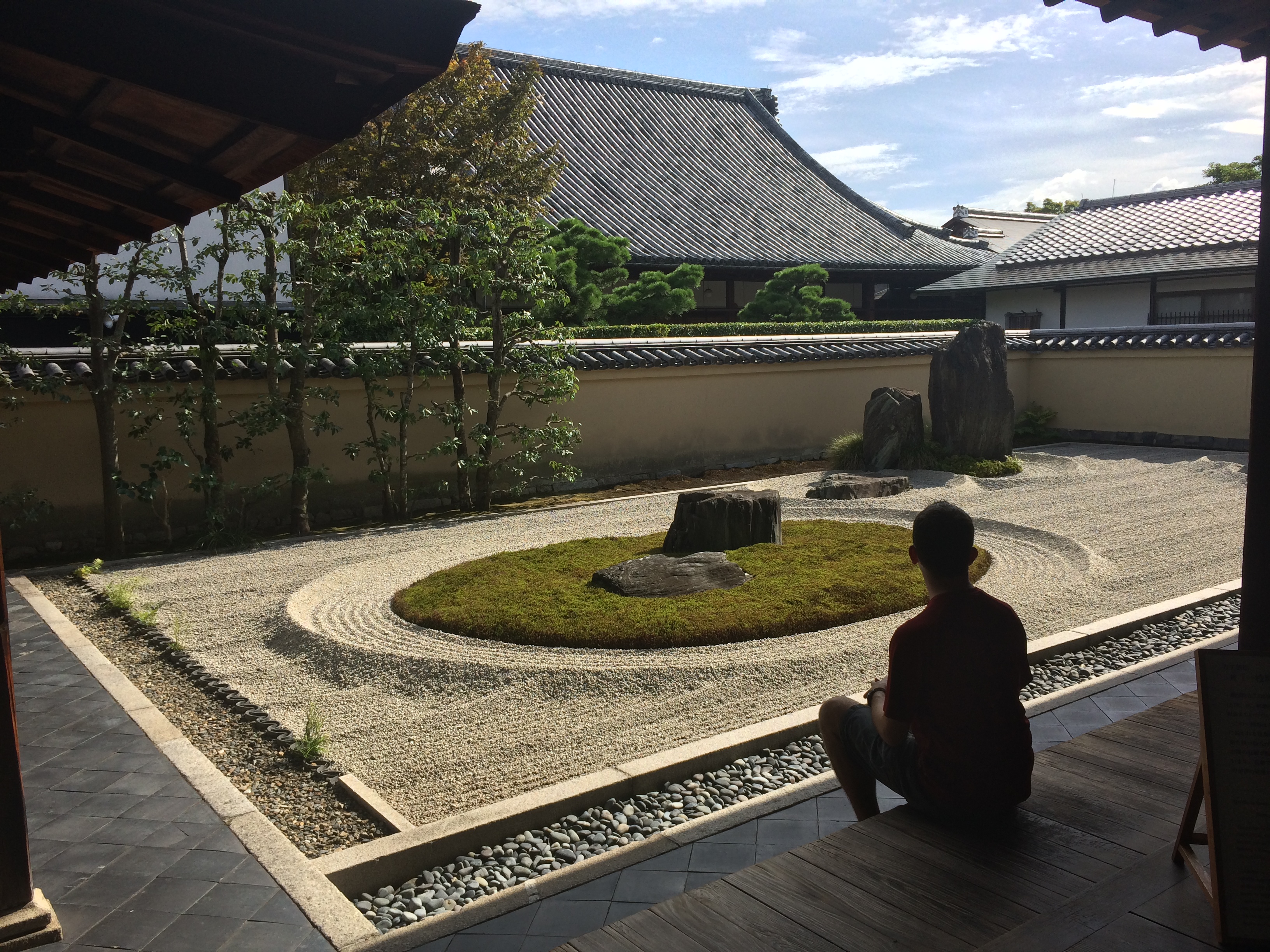
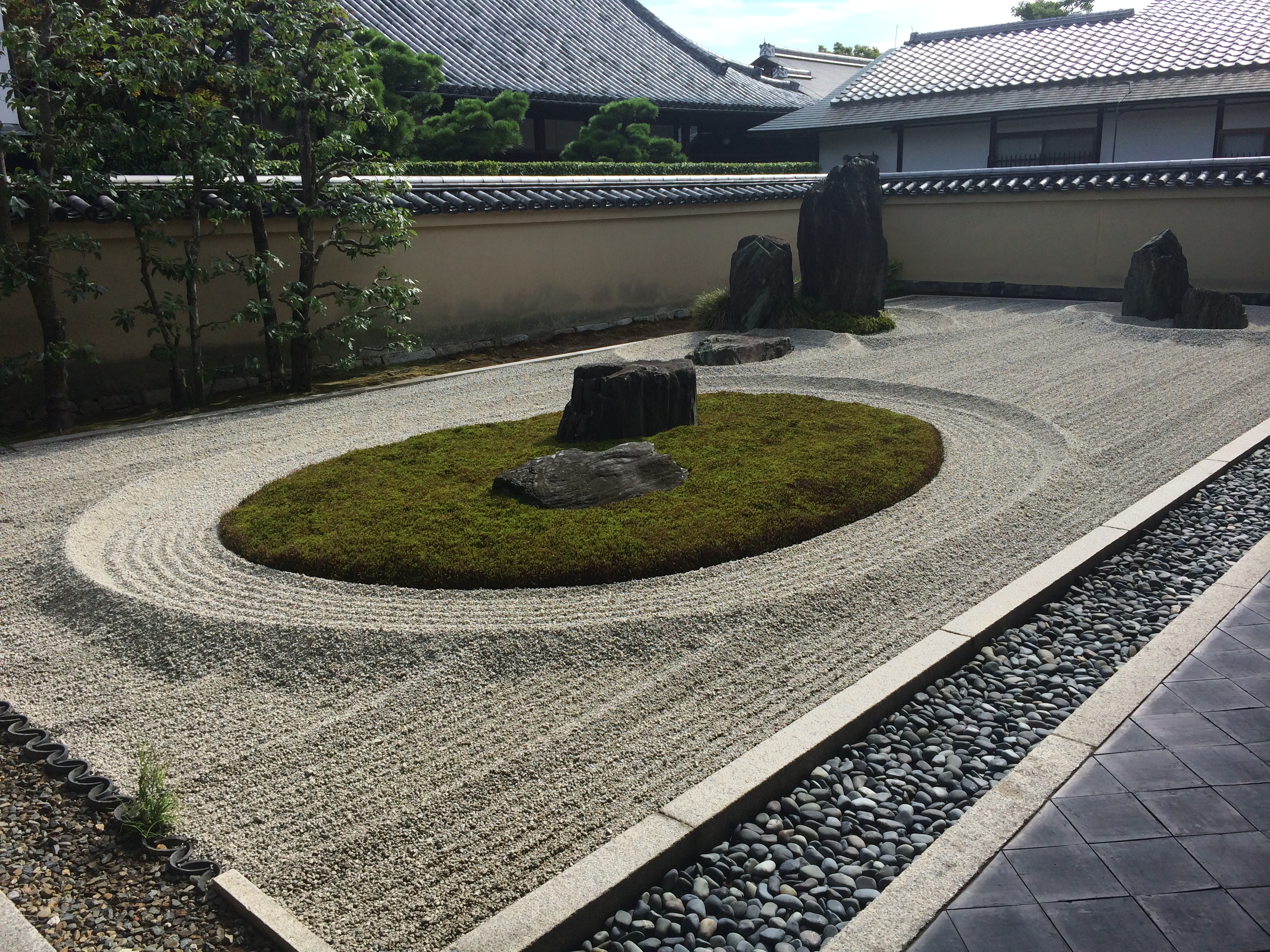
By late afternoon we completed our two-day itinerary for Kyoto and happily returned to our hotel for some more 7-11 cake!
After touring the Angkor Complex early last June, we thought we were templed out. After visiting the temples along Bangkok’s Chao Phraya river in mid-June, we thought we were templed out. After exploring Bagan’s city of temples and shrines, we were pretty damn sure this time we were done with temples. But finally, we spent two more days temple-hopping in Kyoto. After our FINAL temple-tour of this trip, we agreed that the Japanese temples were the most well-kept, cleanest, and peaceful temples we have ever seen. Southeast Asians hardly give a shit about anything including their monuments, historical sites, and money-making tourist attractions; as a result, trash and rudeness runs large. Japanese culture embraces politeness and tidiness in their homes and public spaces, and this notion is clearly reflected in their cherished sites.
When I return to Kyoto someday, I plan to stay for at least four days and I would come during the autumn, where no words can describe the beauty of the sky-blazing foliage. Hell, I’ll even see a traditional geisha show in Gion. Truthfully I am surprised that having visited Japan on two other occasions, I have never been to Kyoto until now. But hey, now I can say I got my temple on in Japan!


